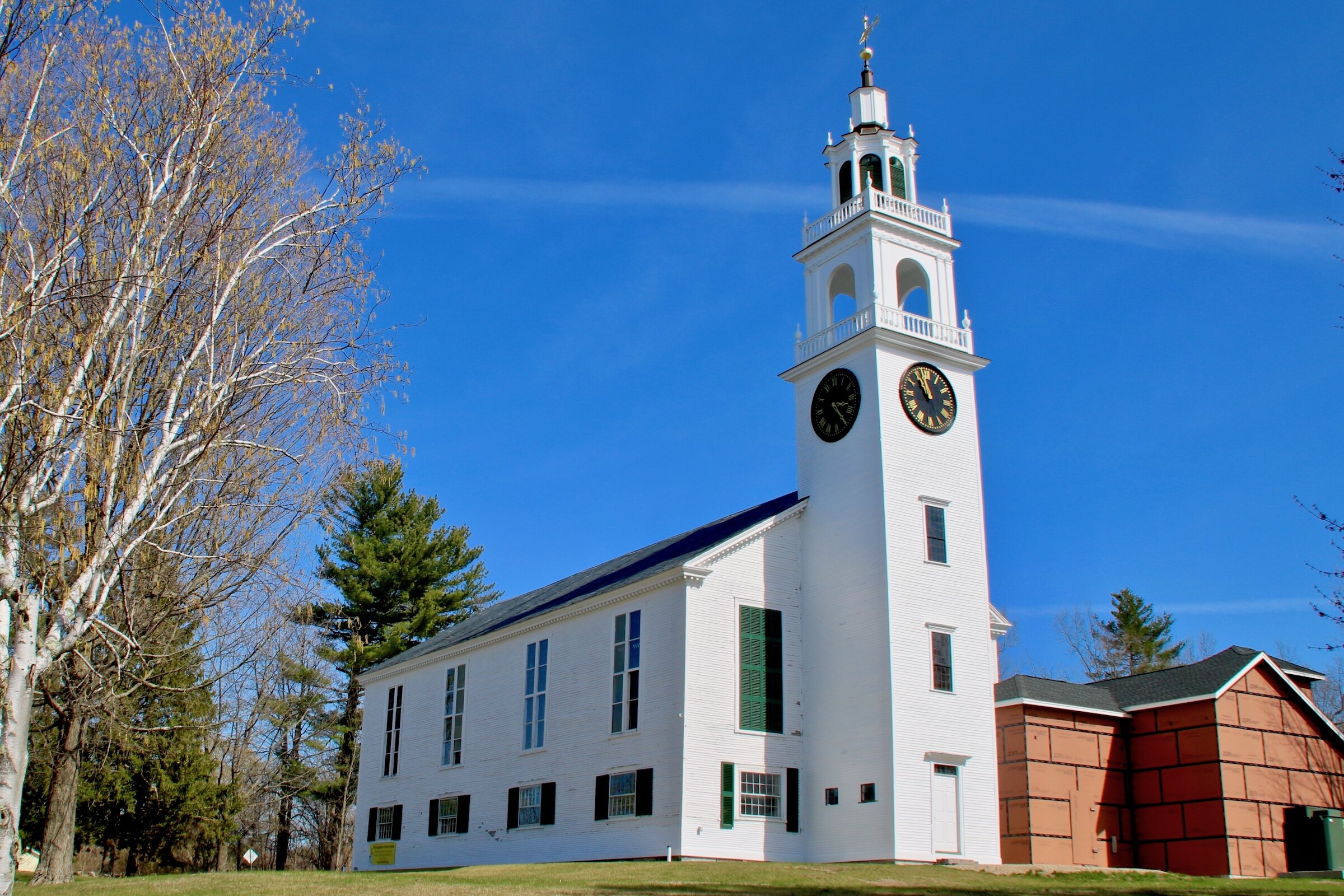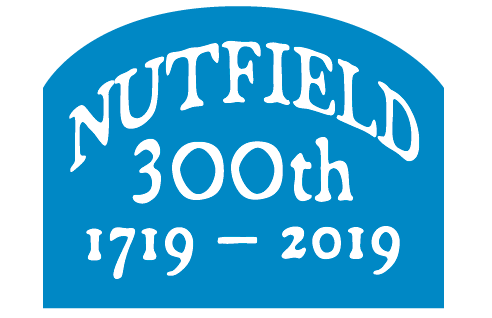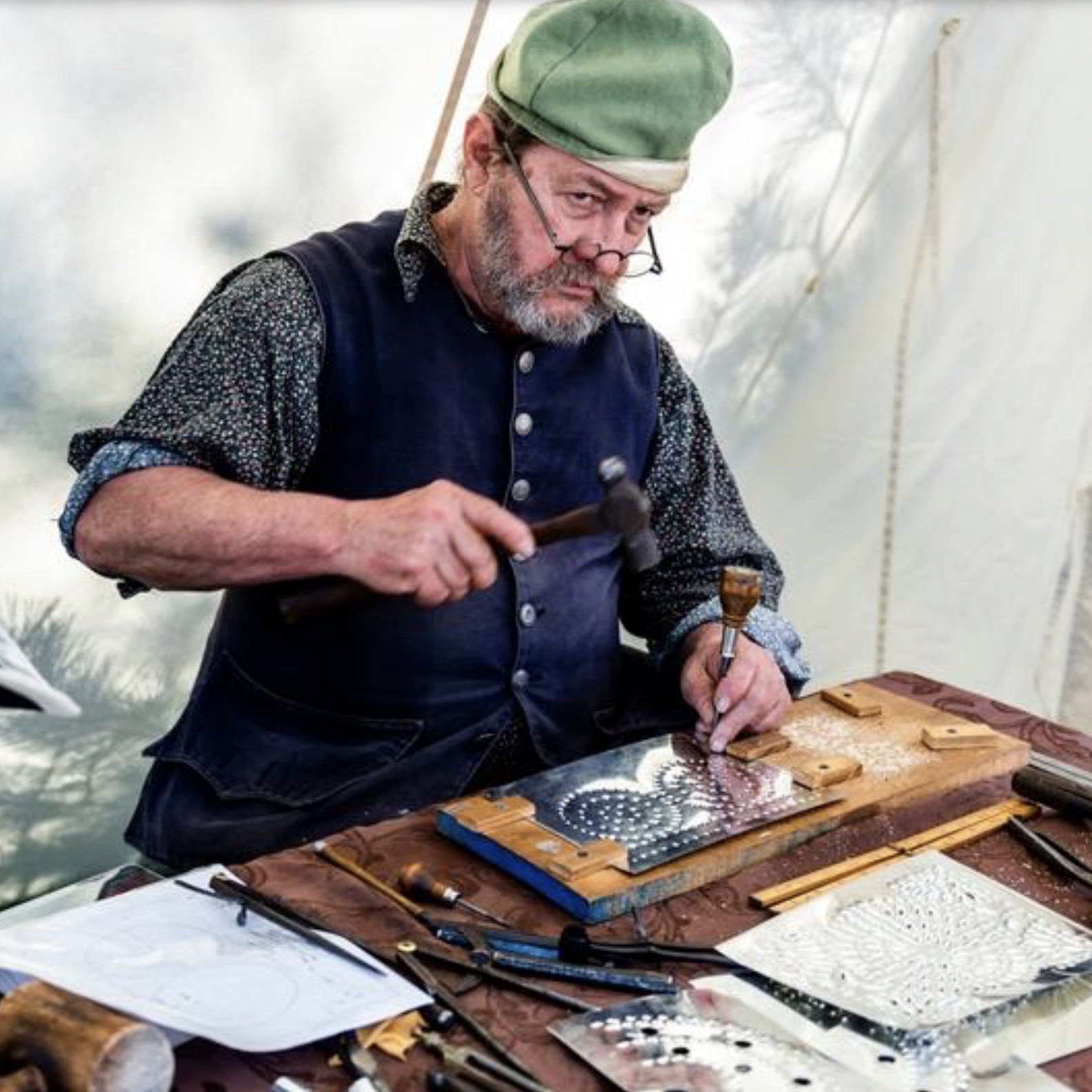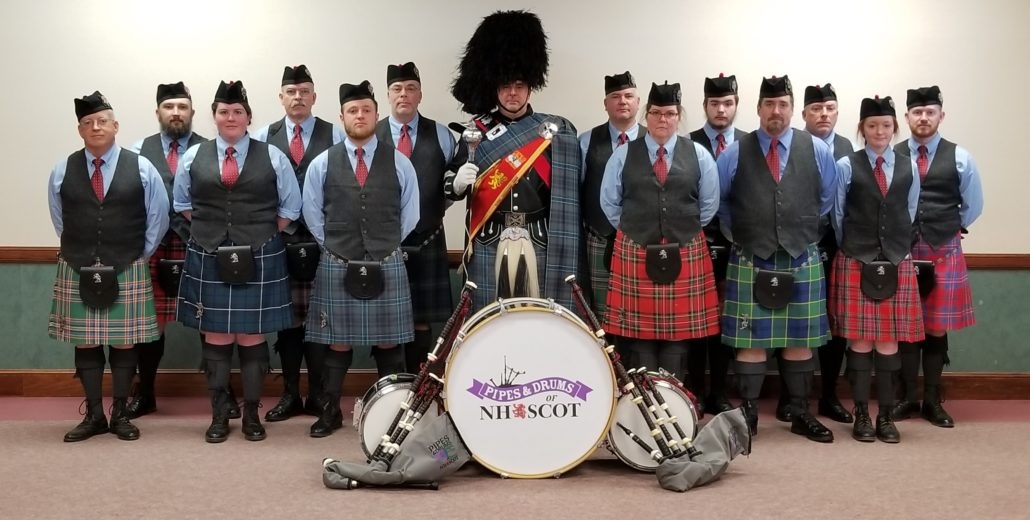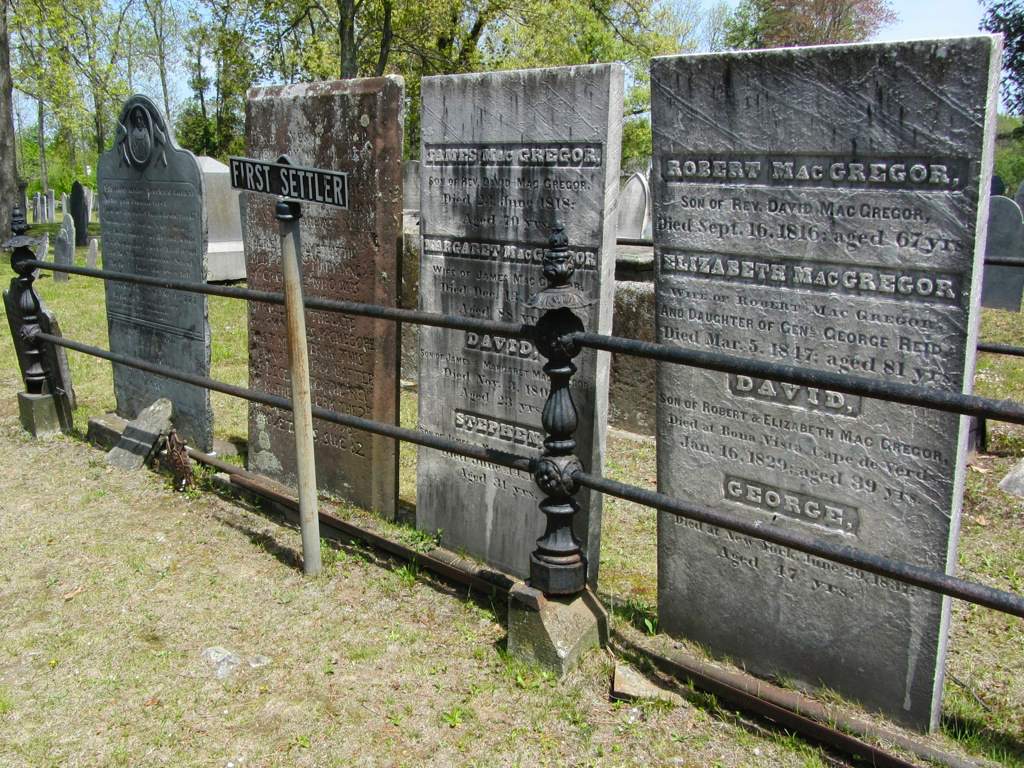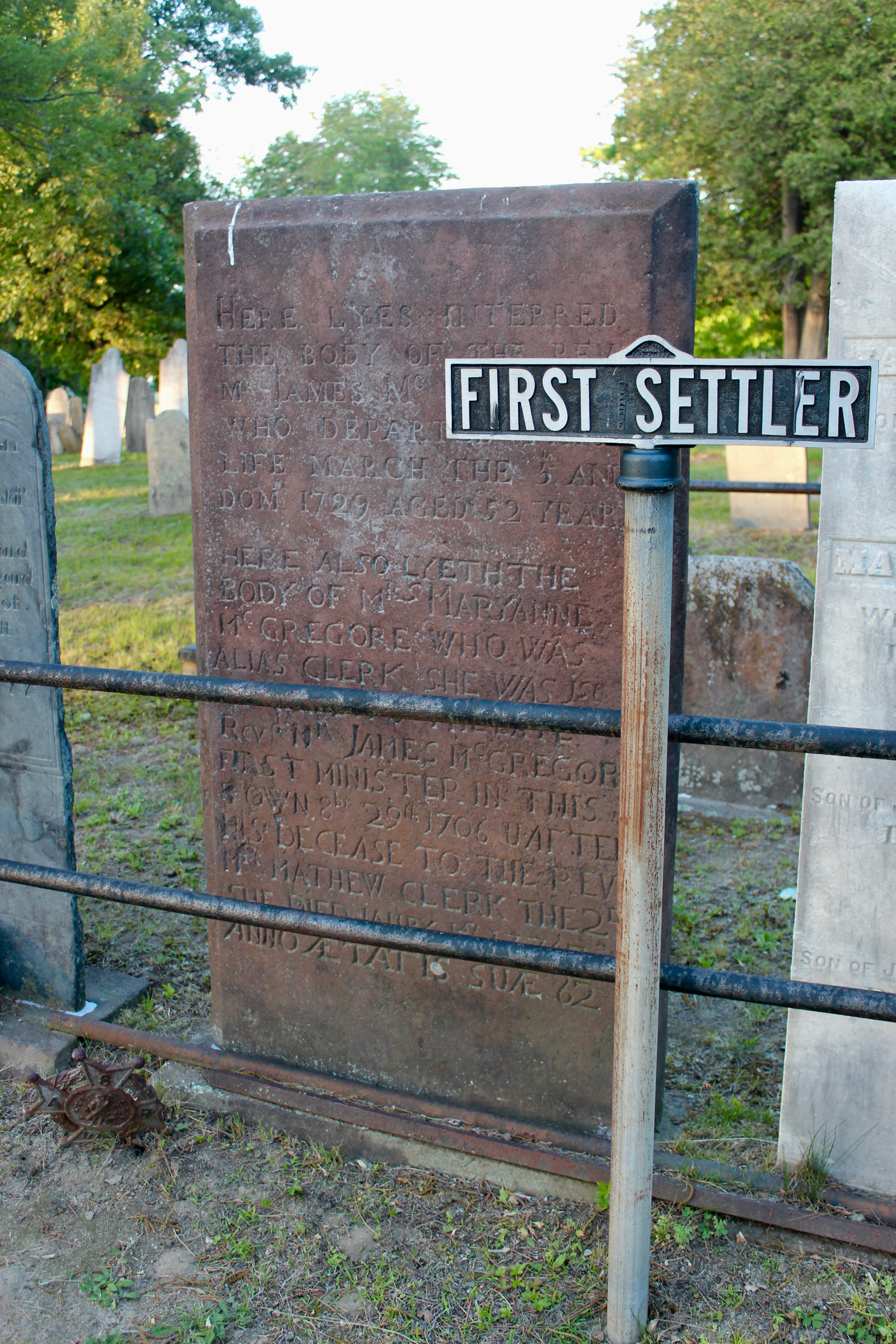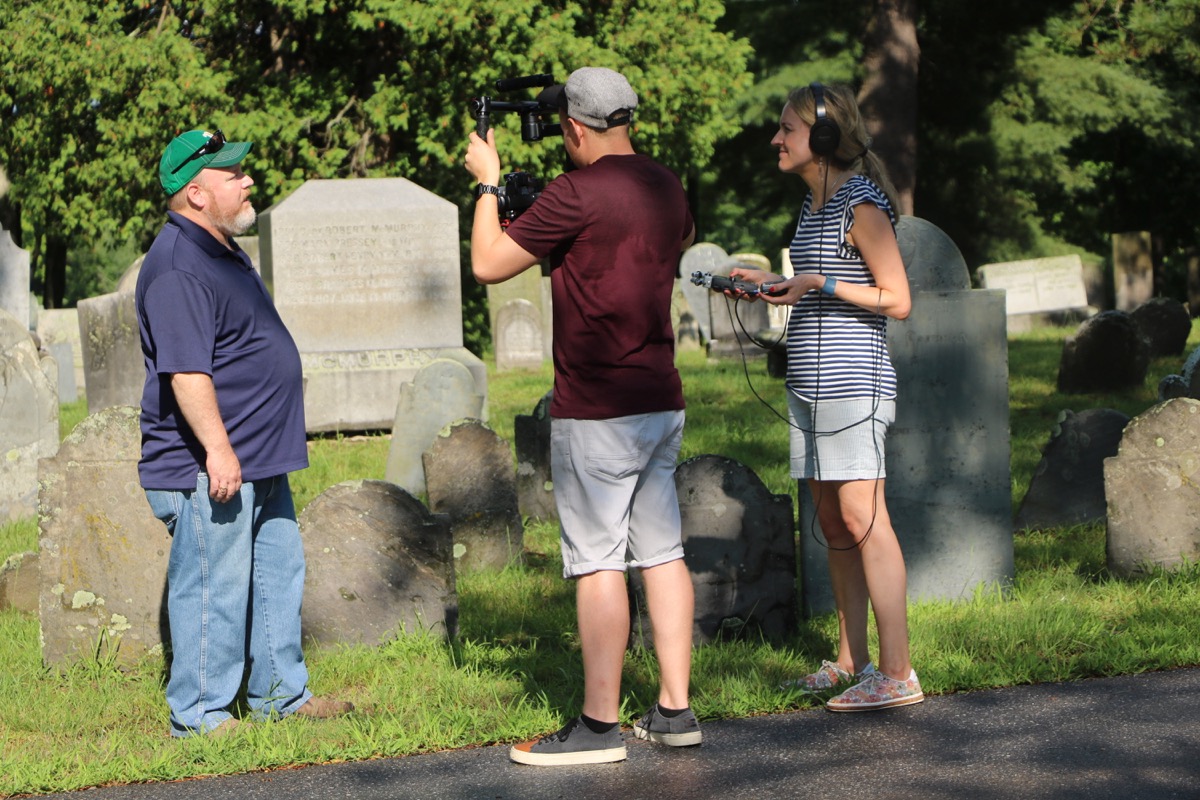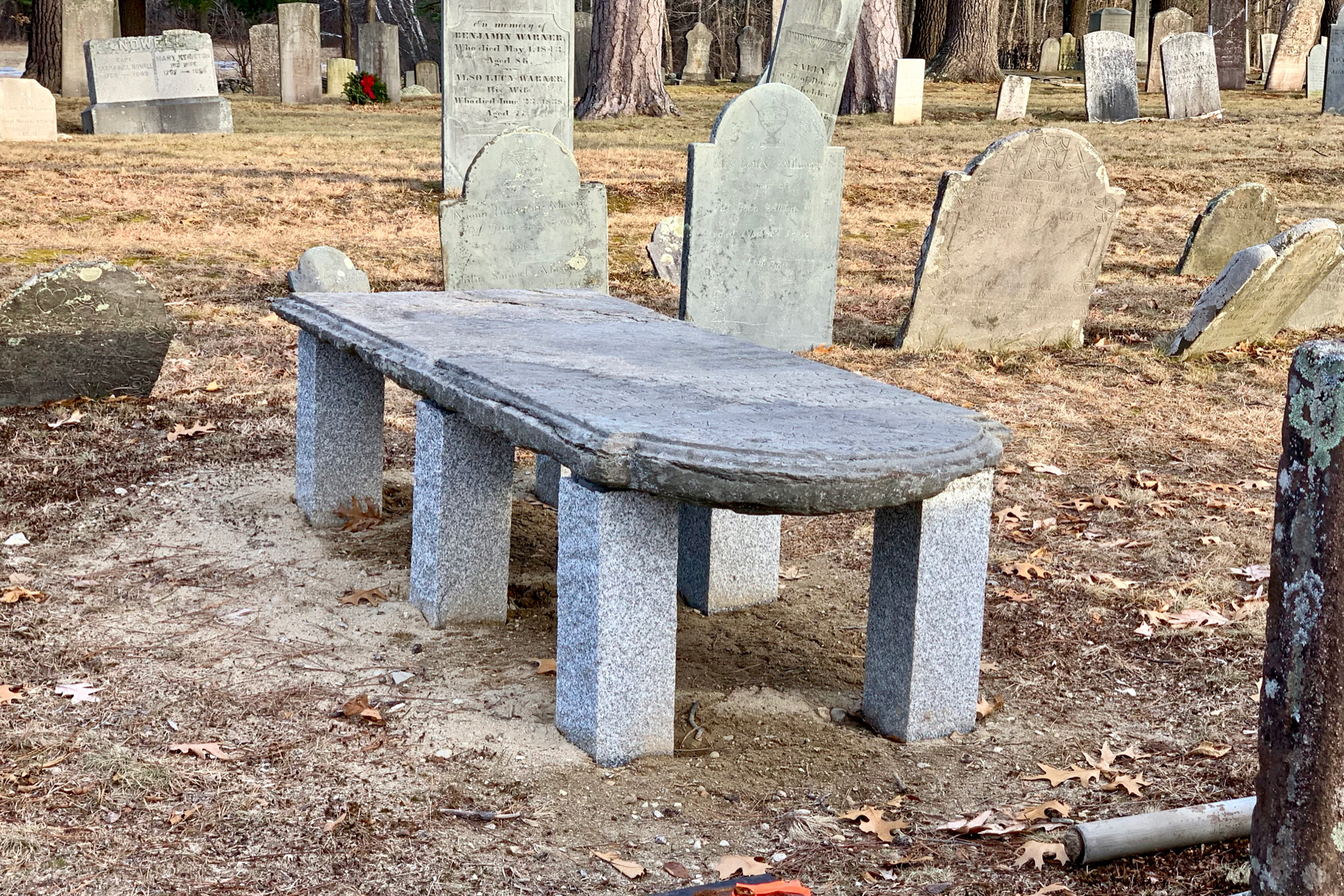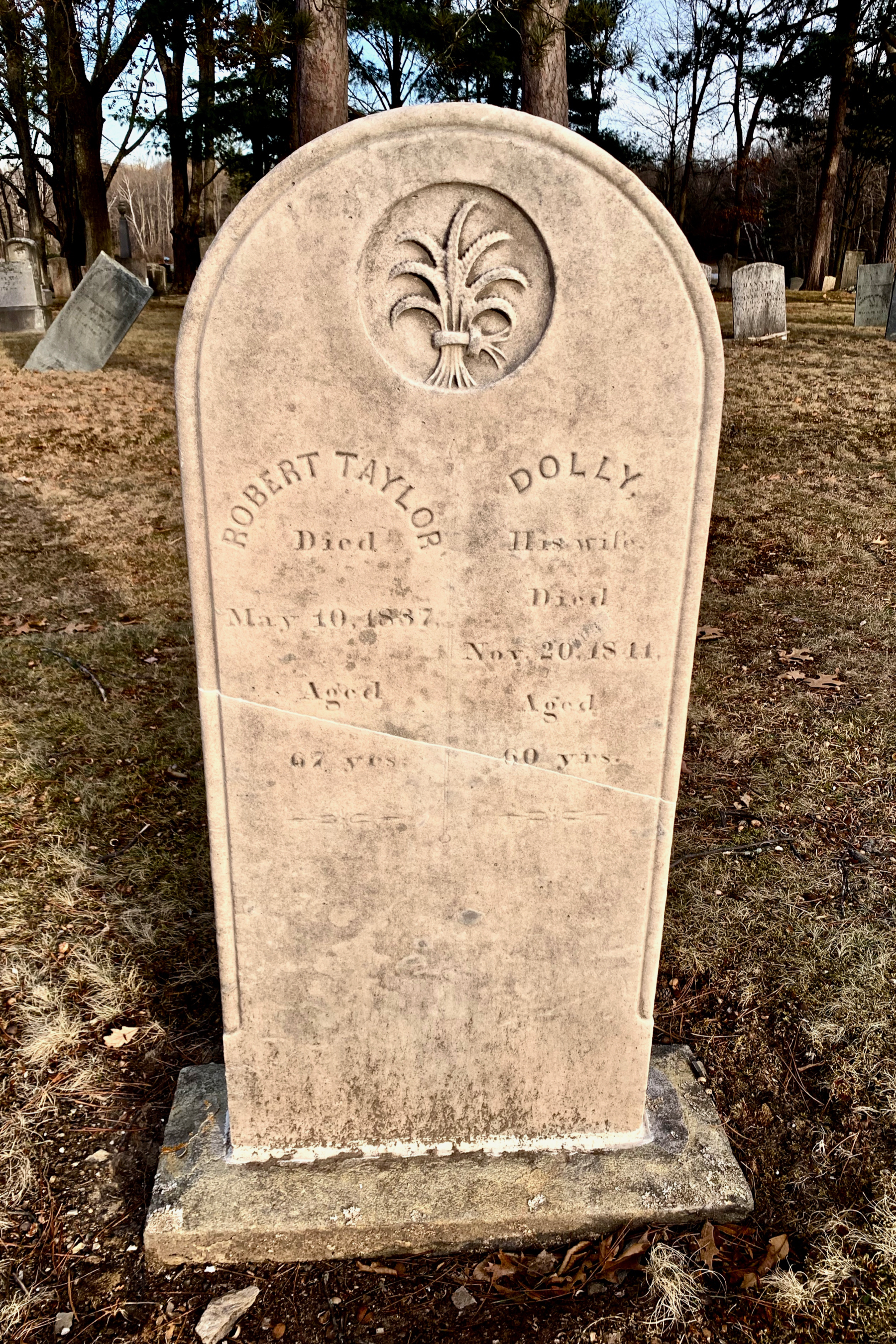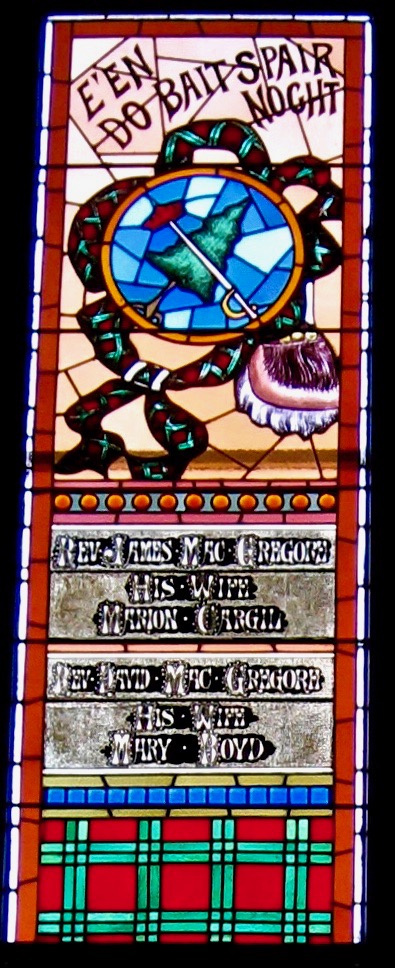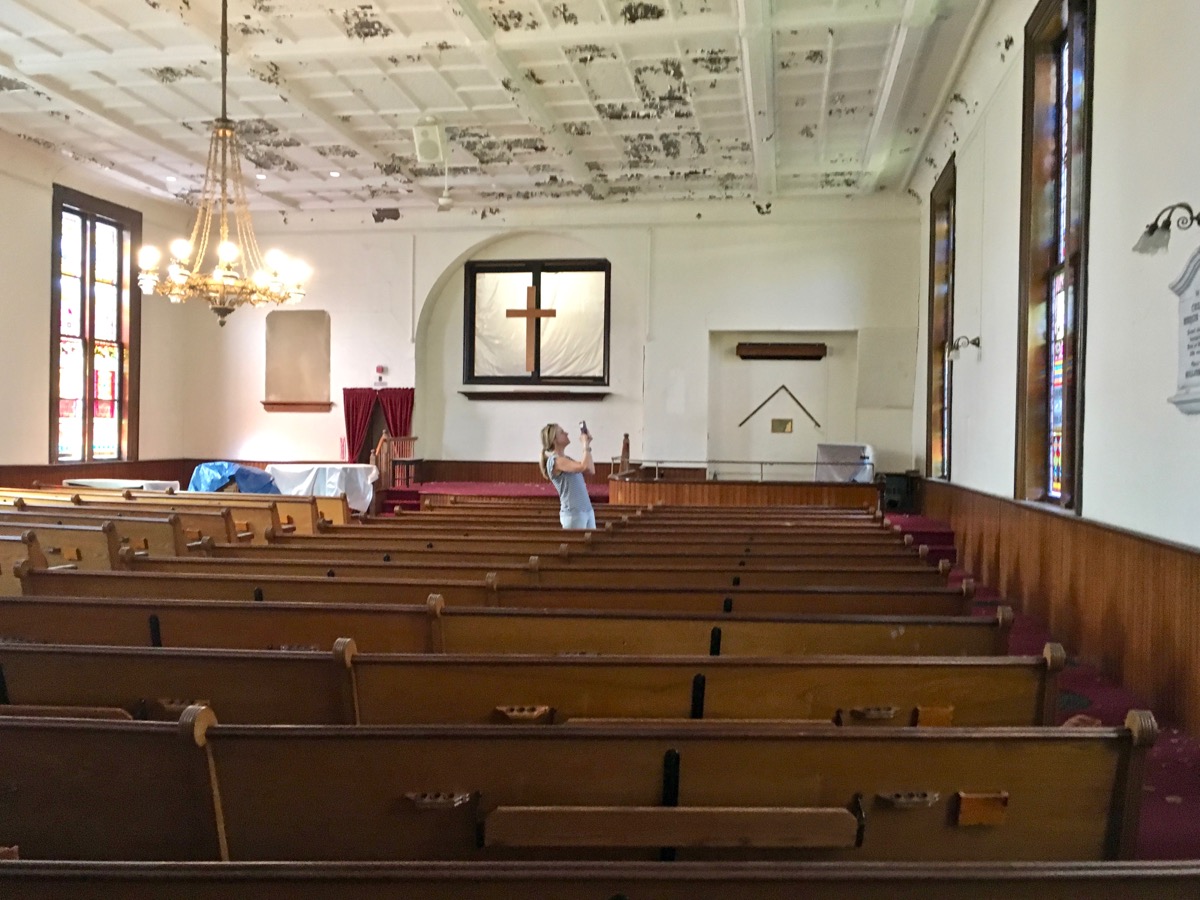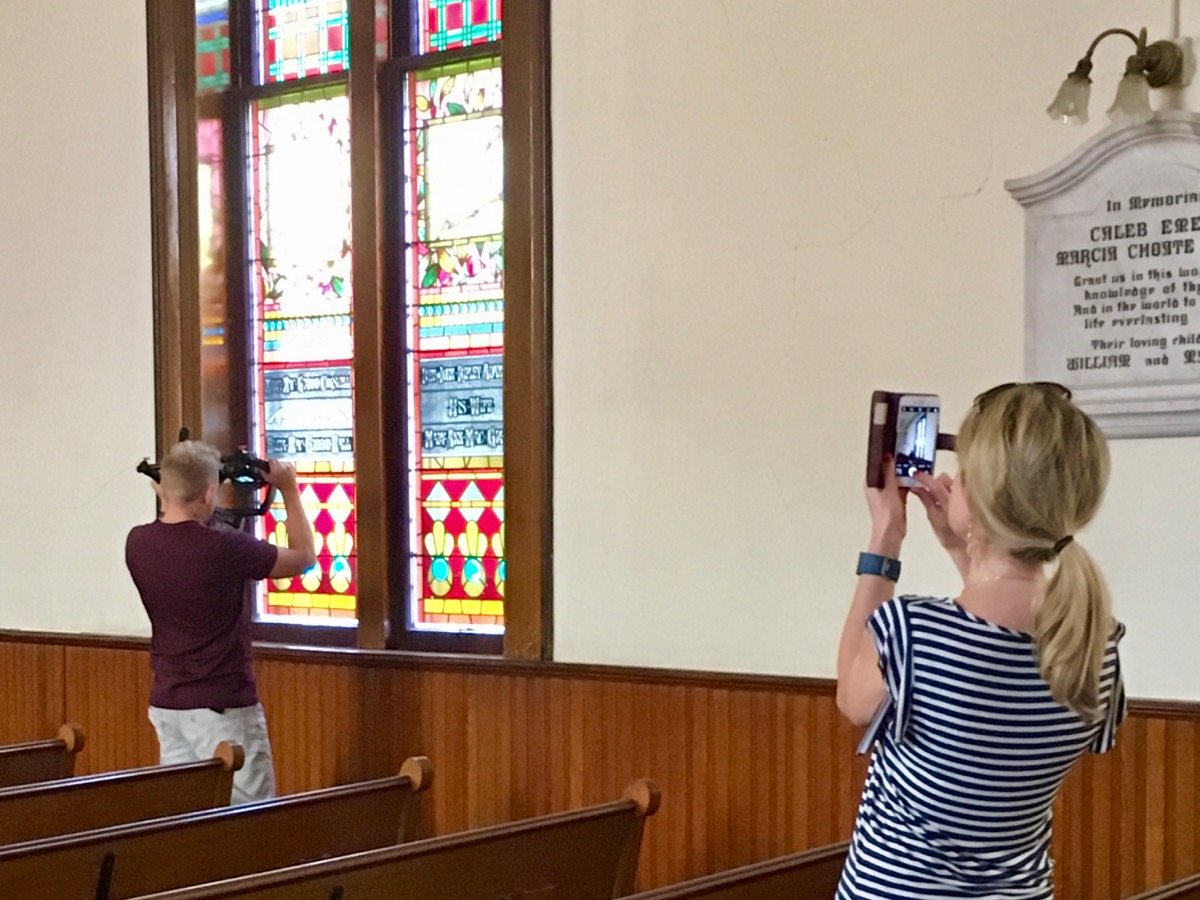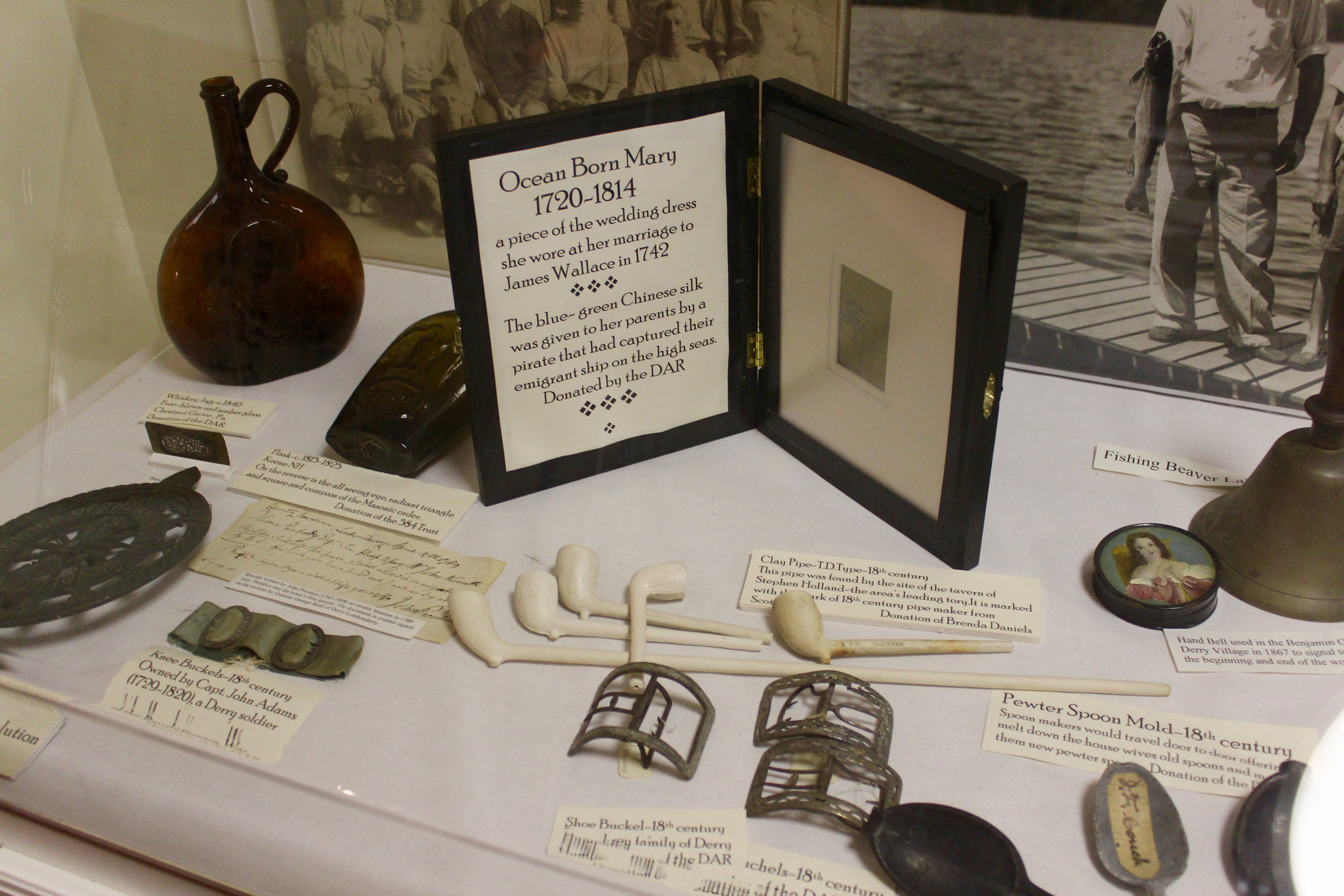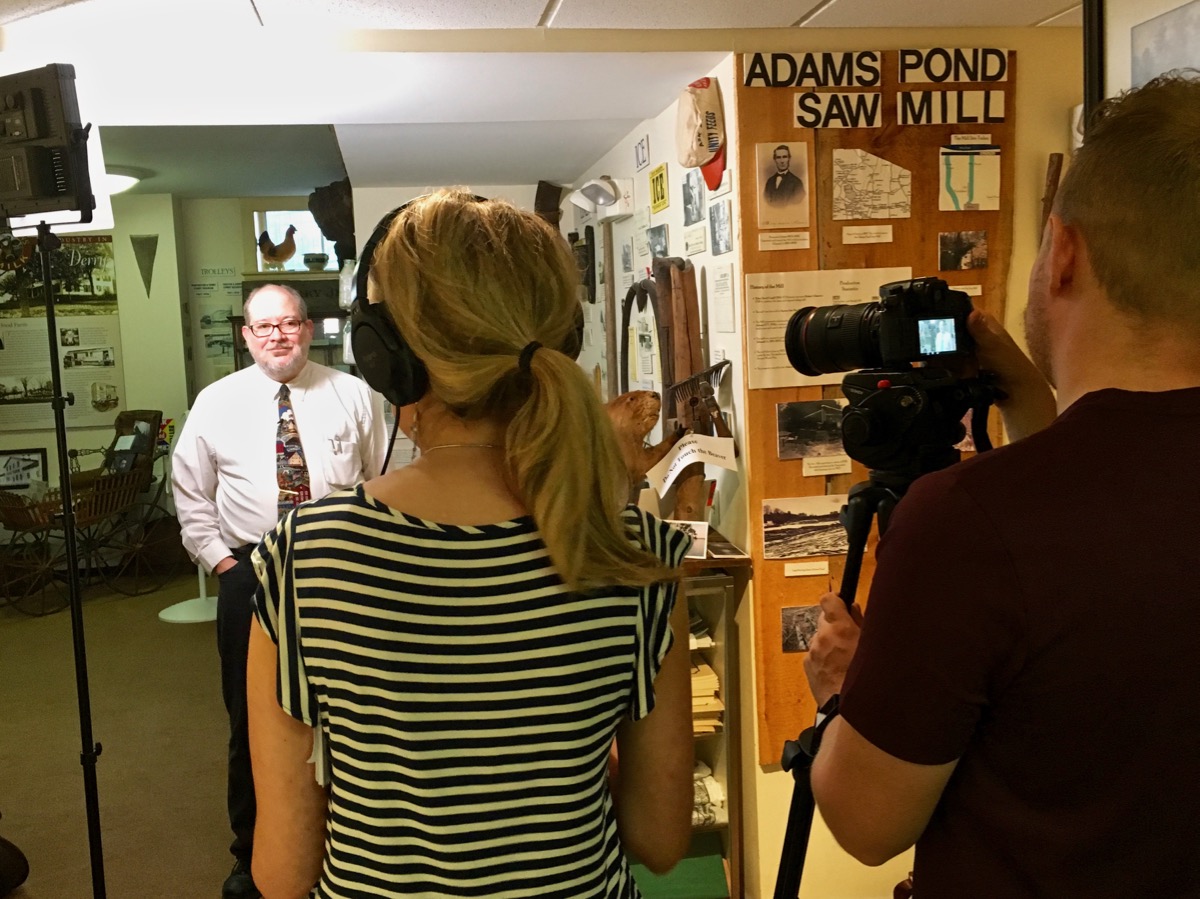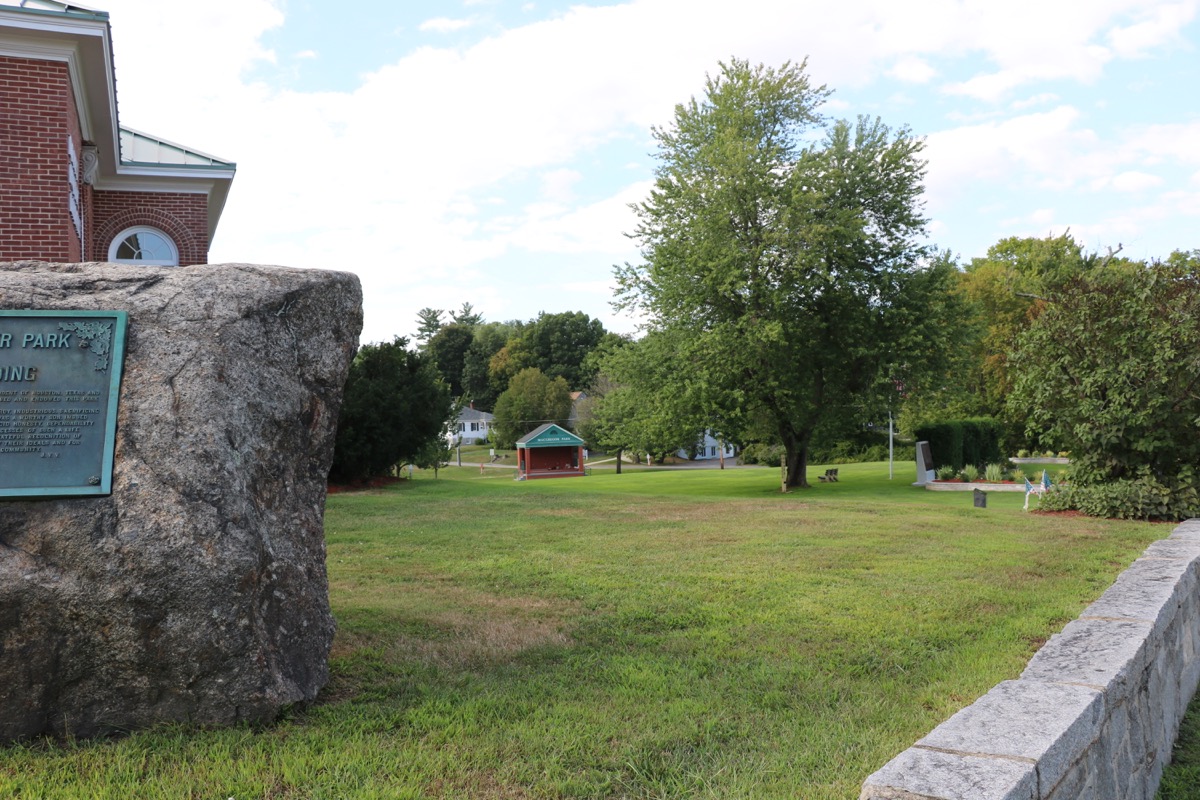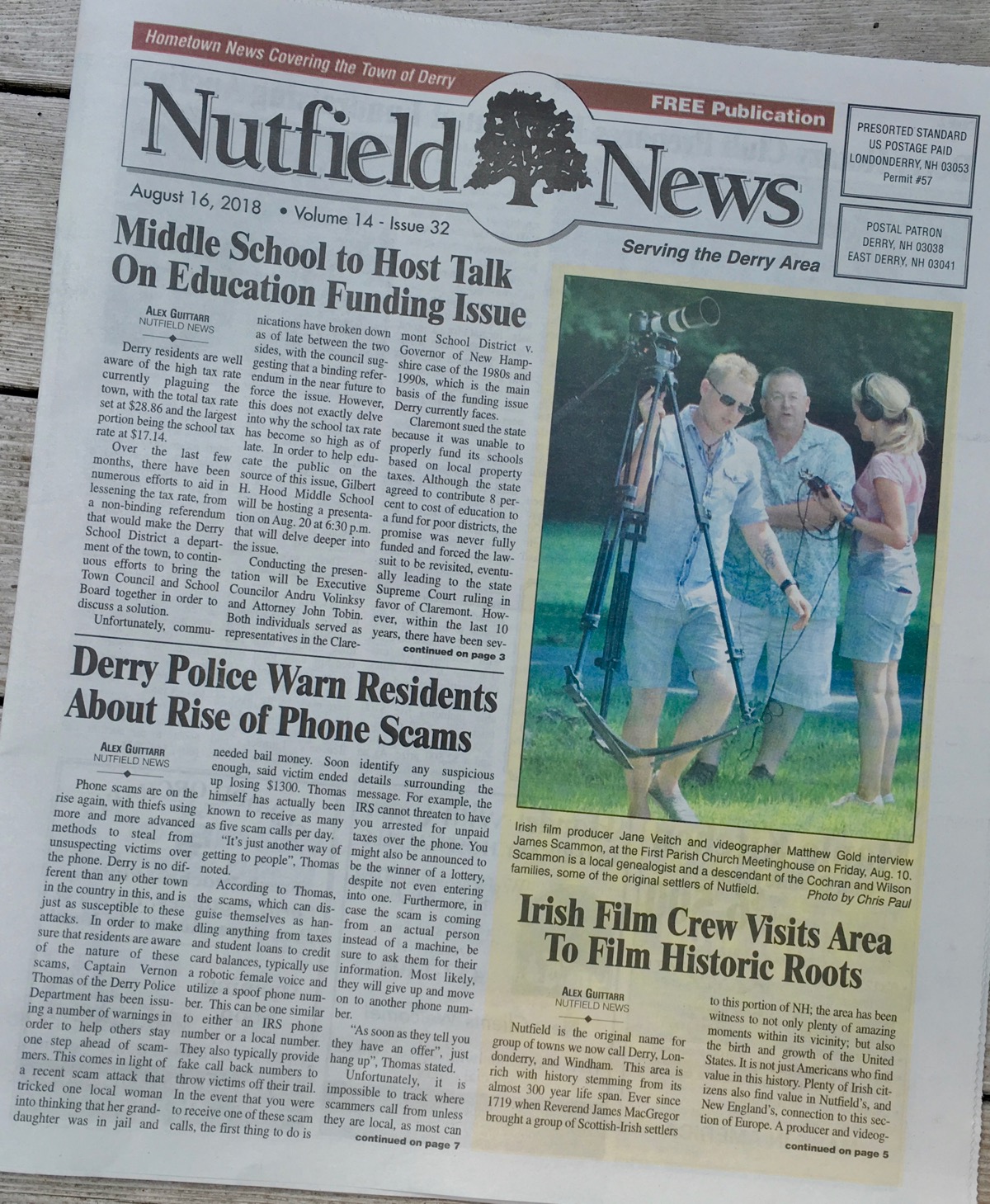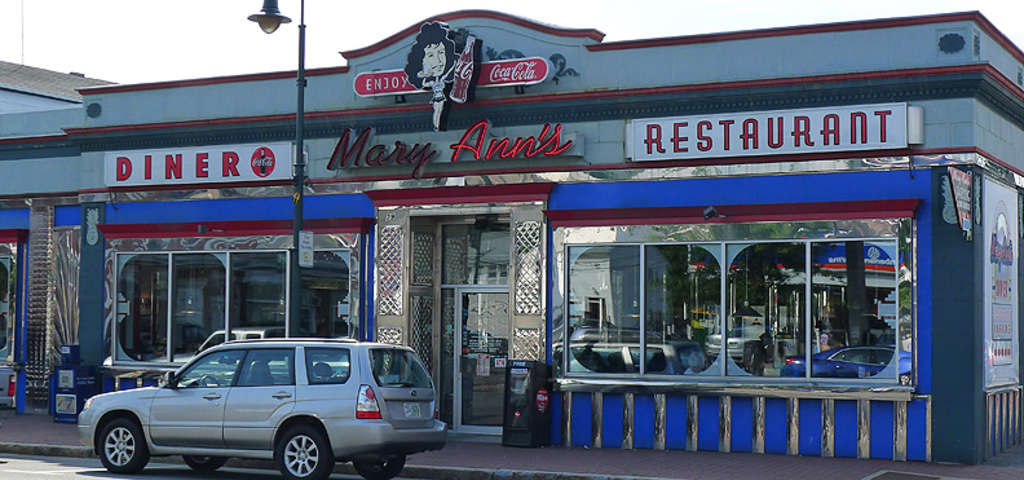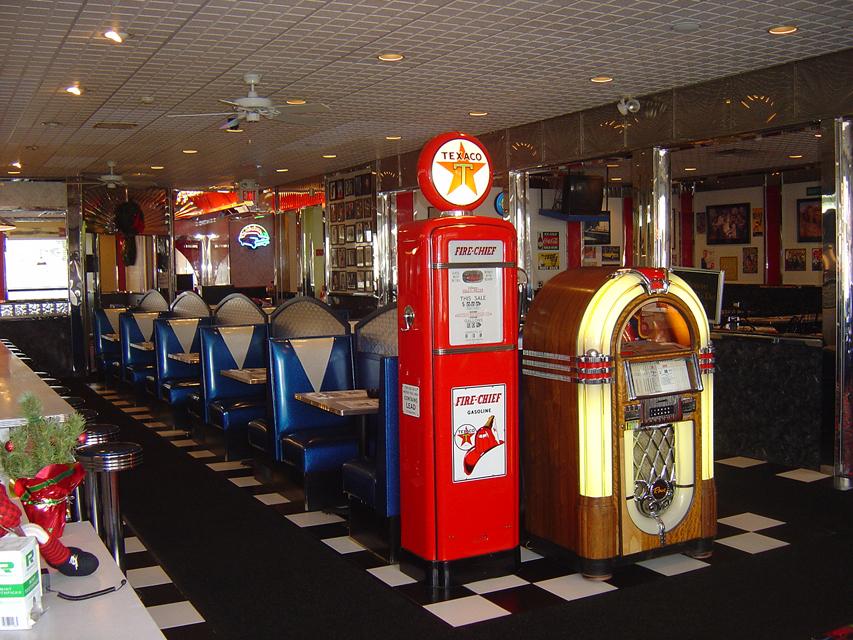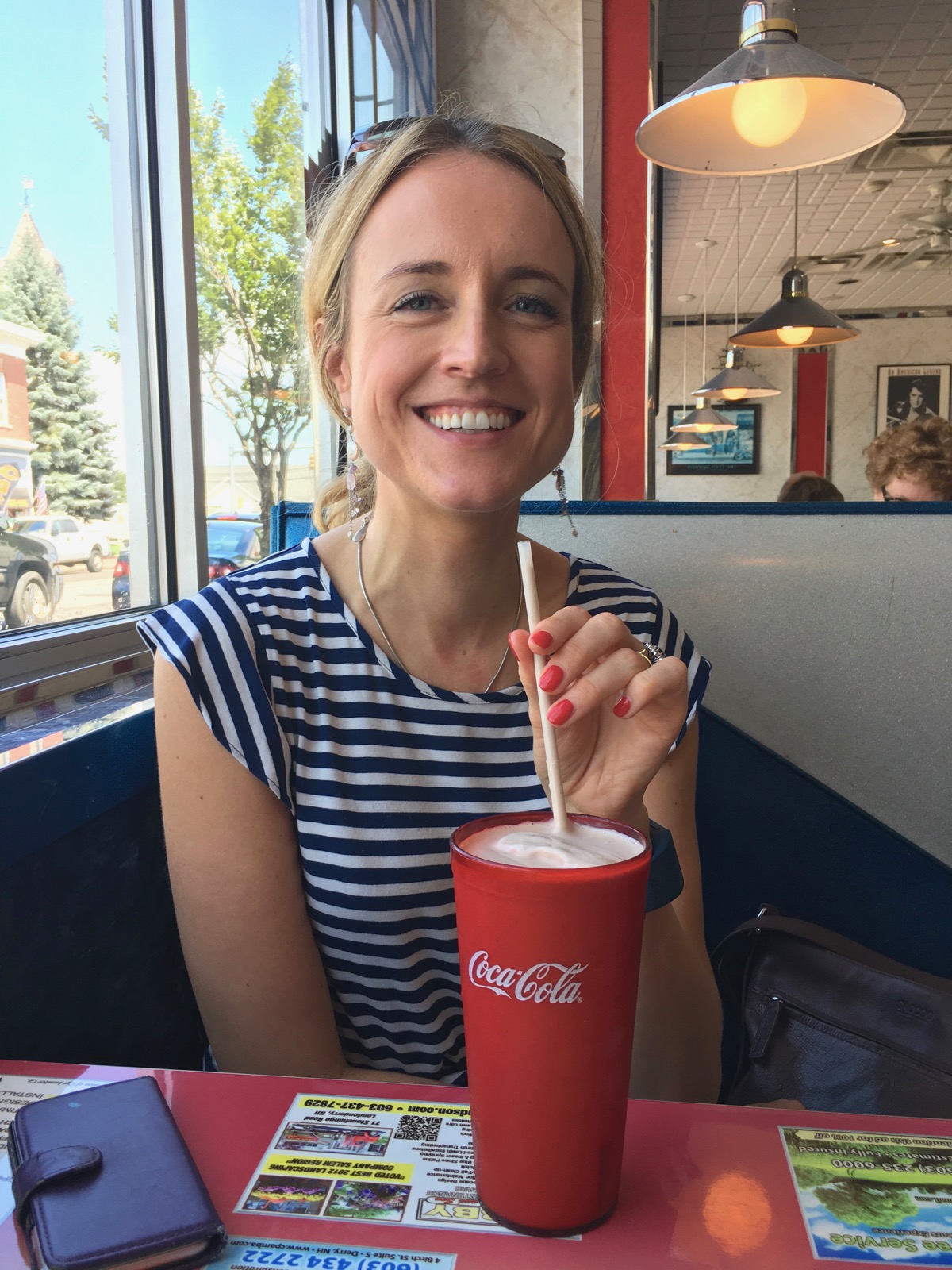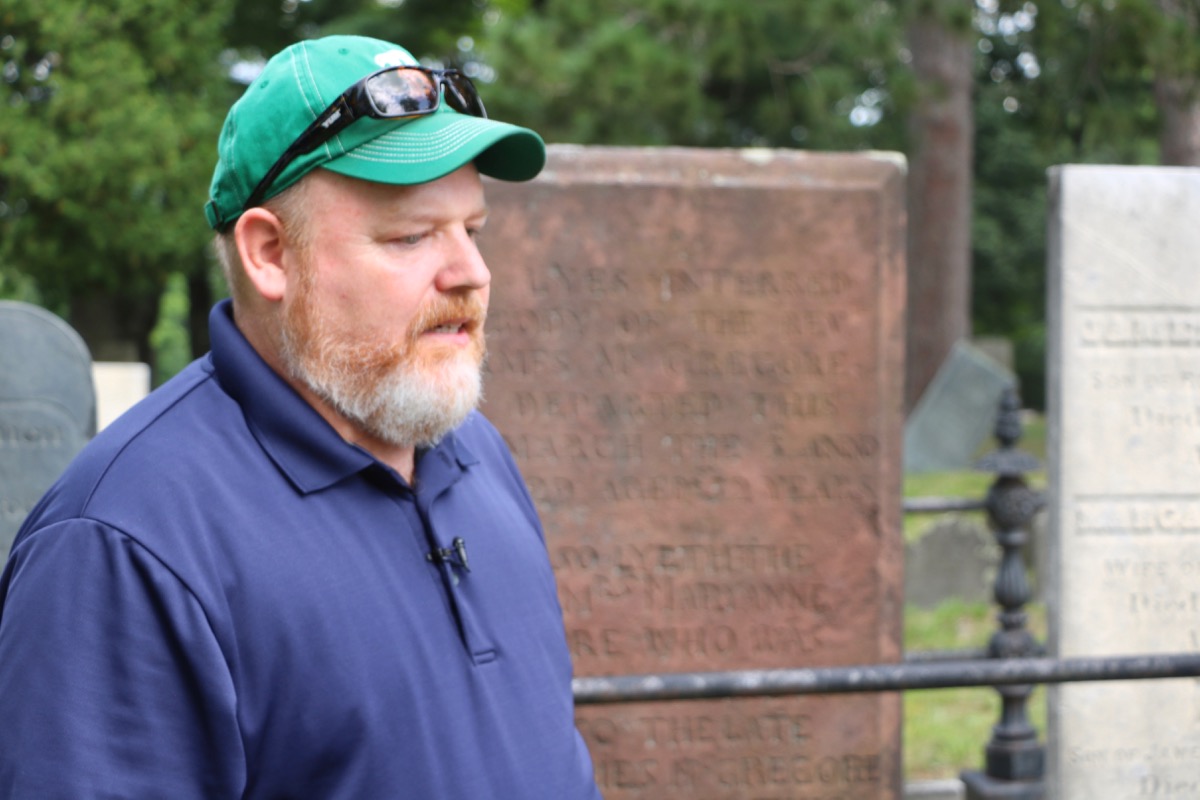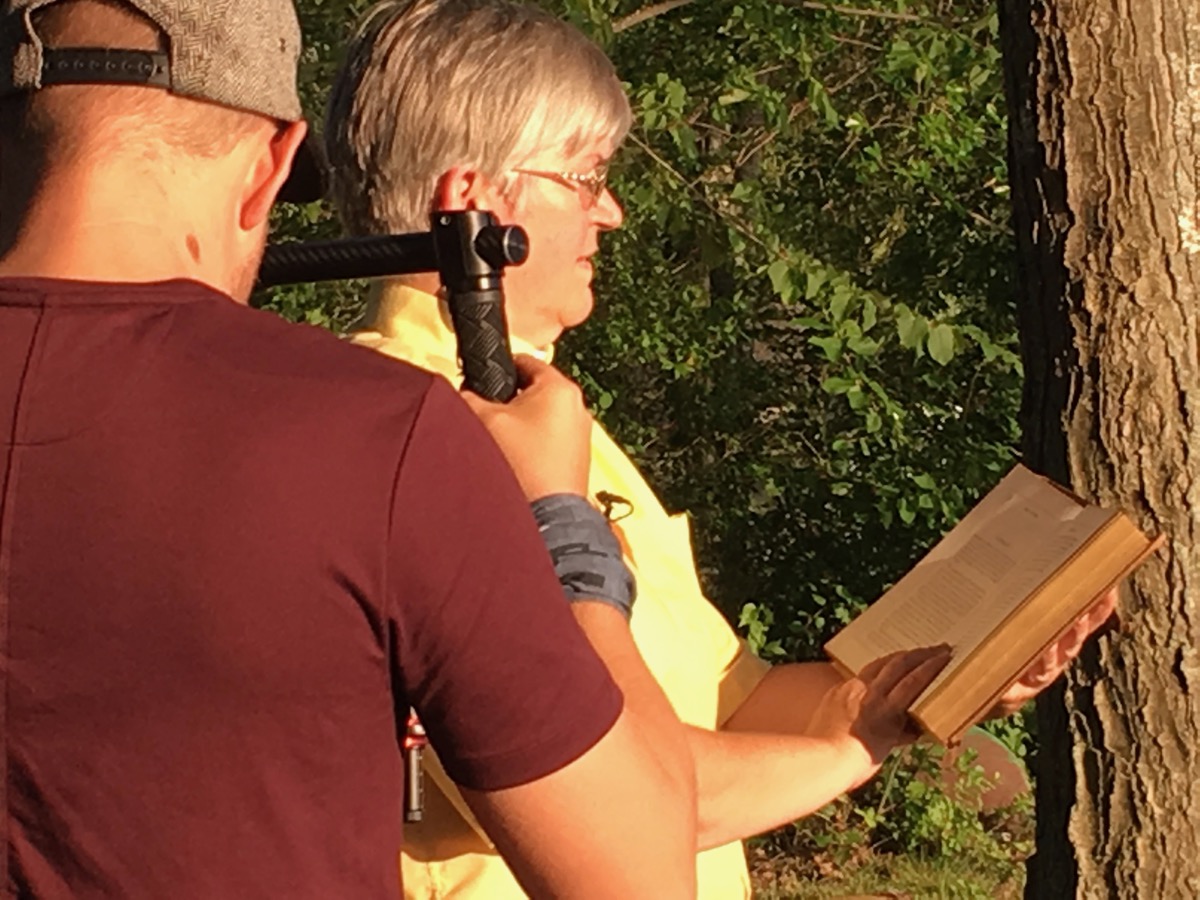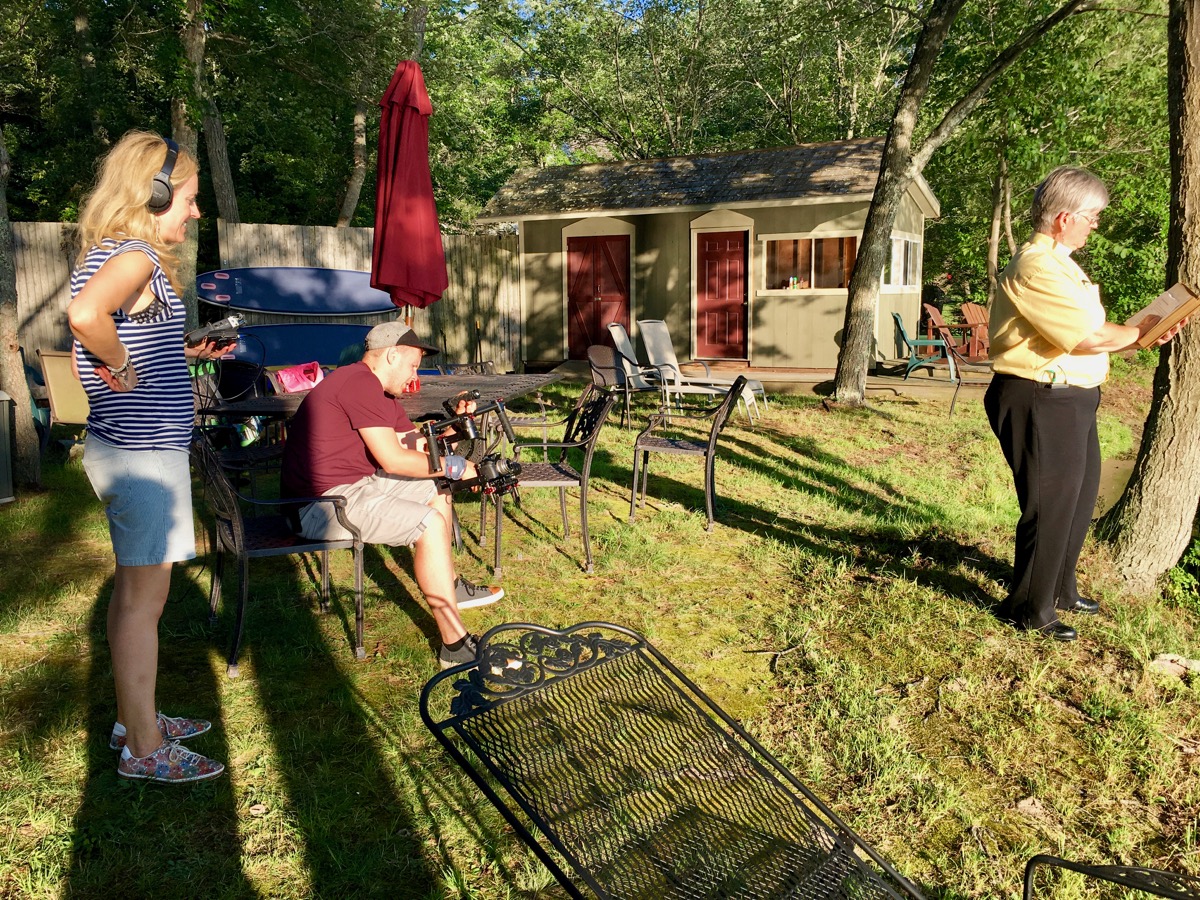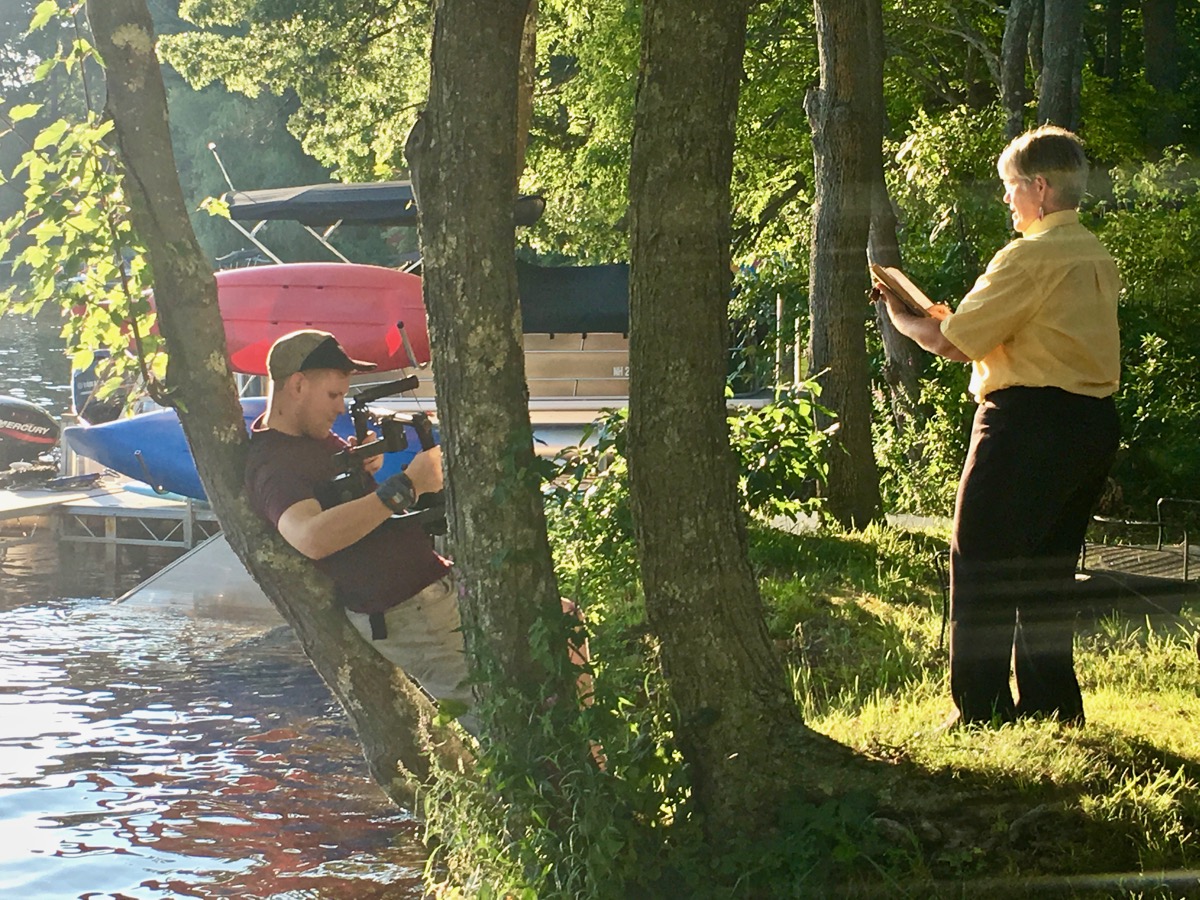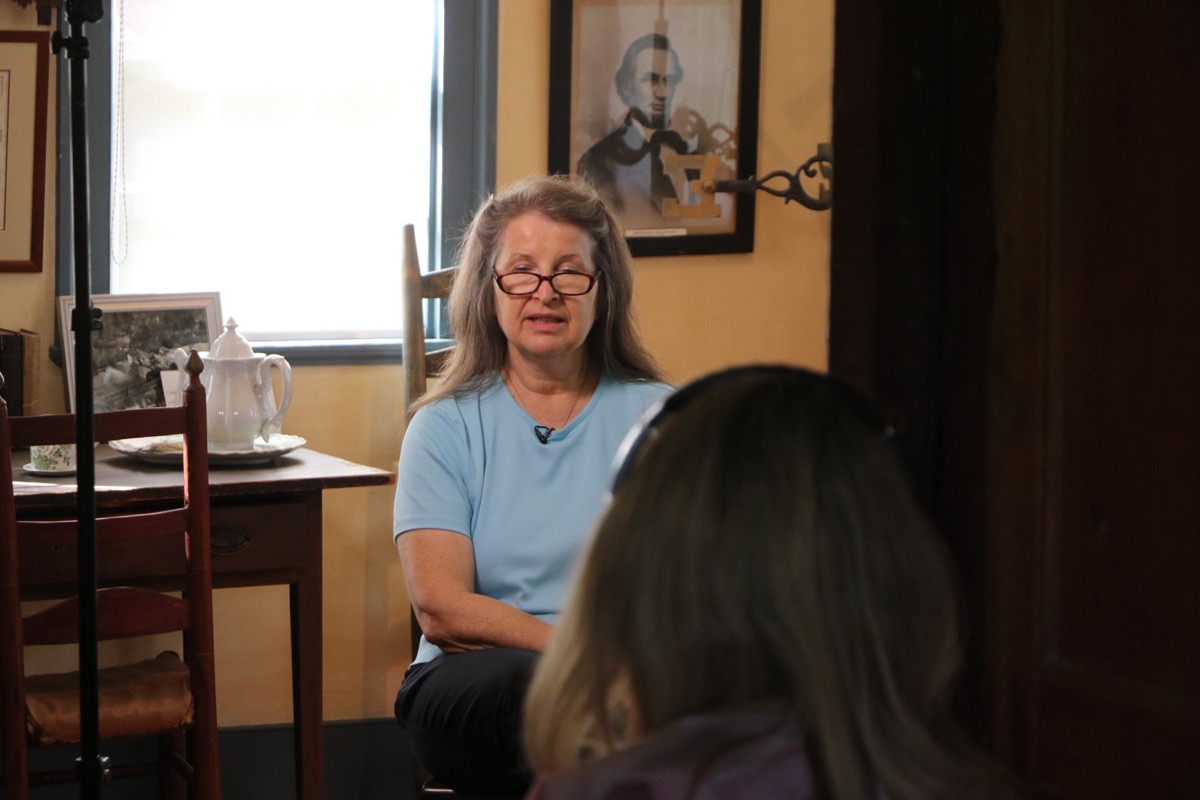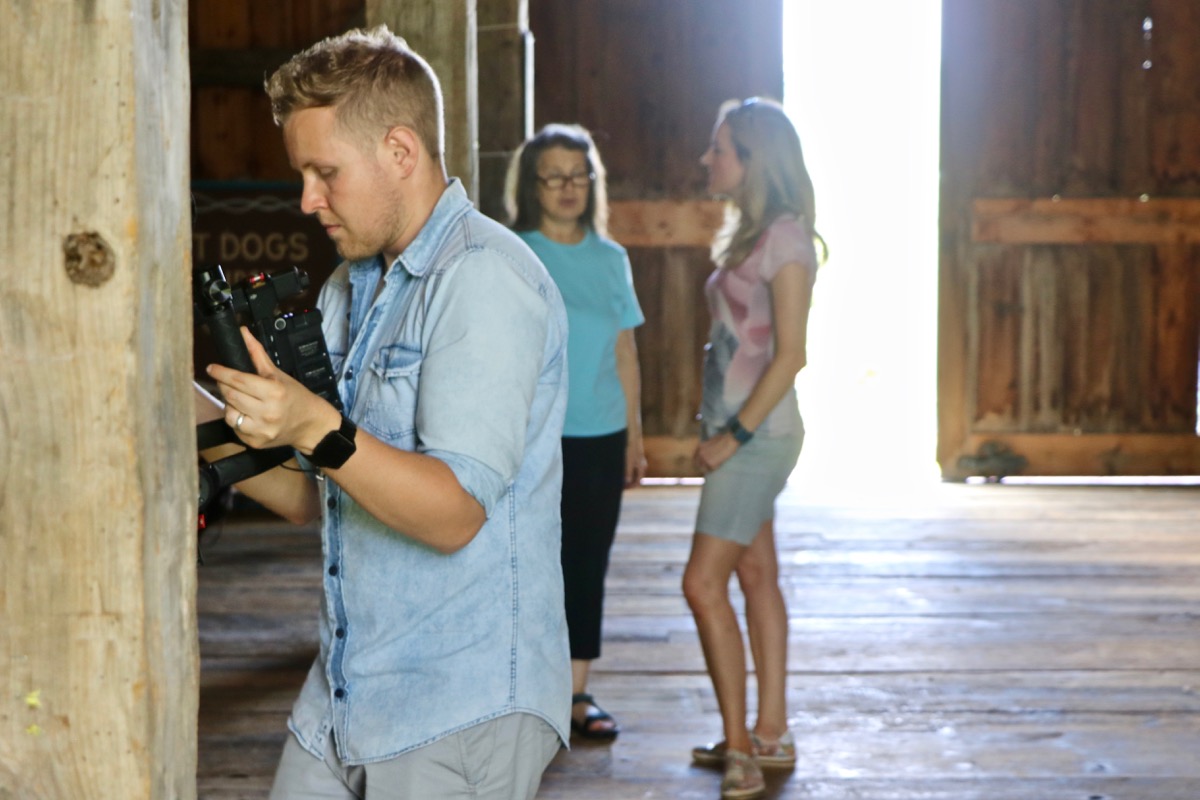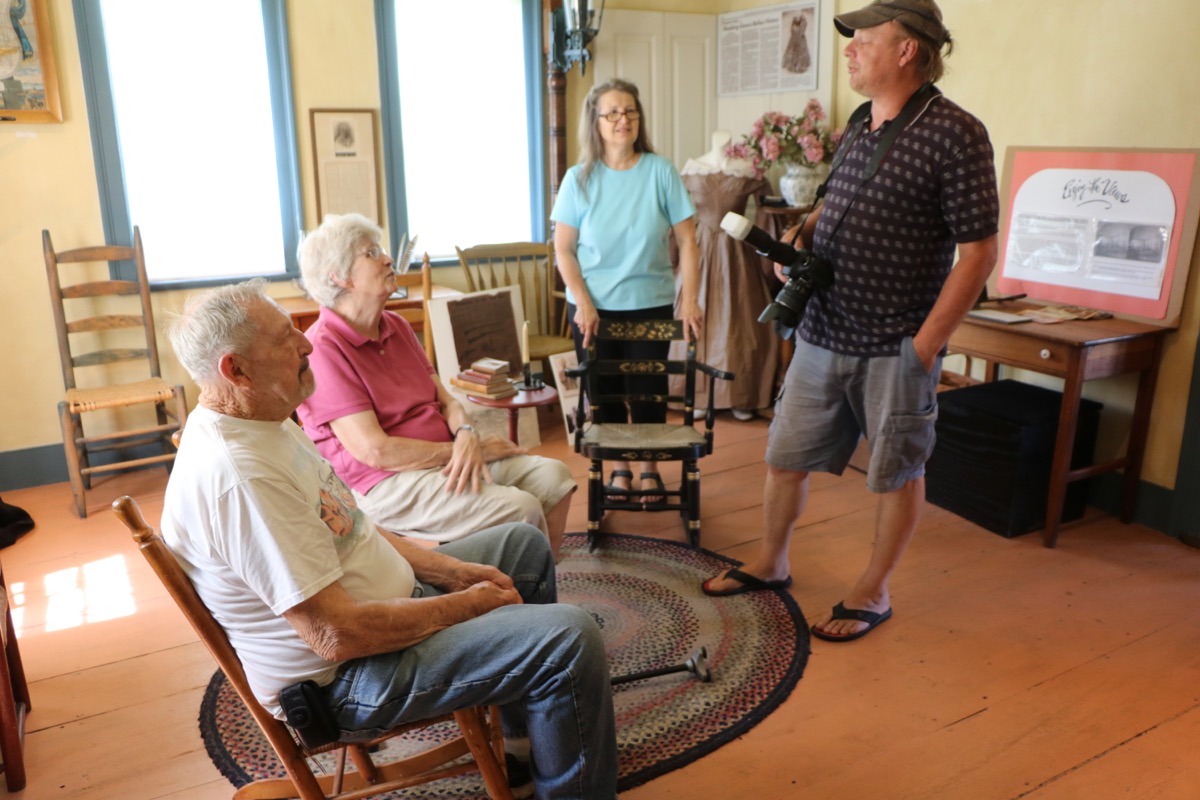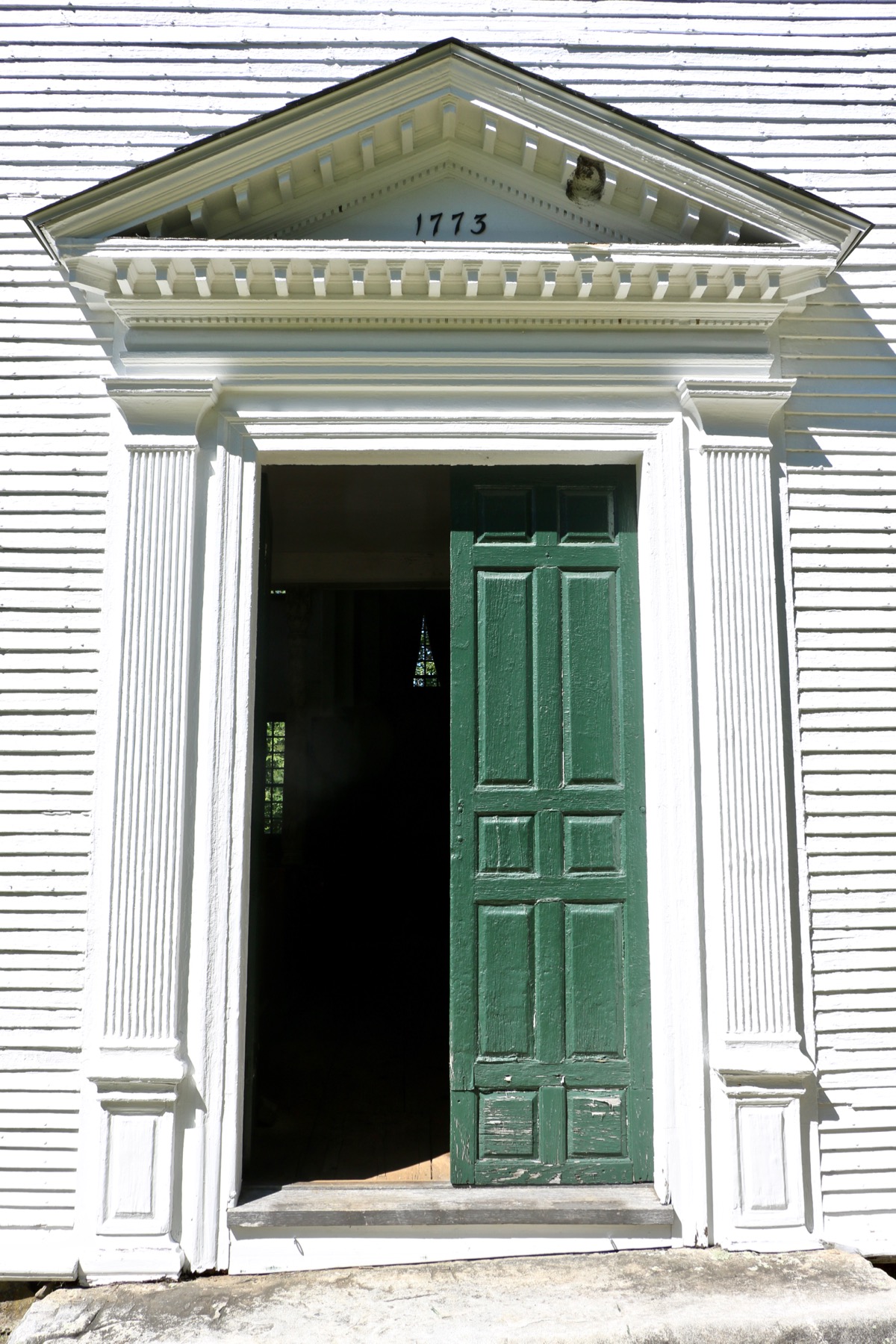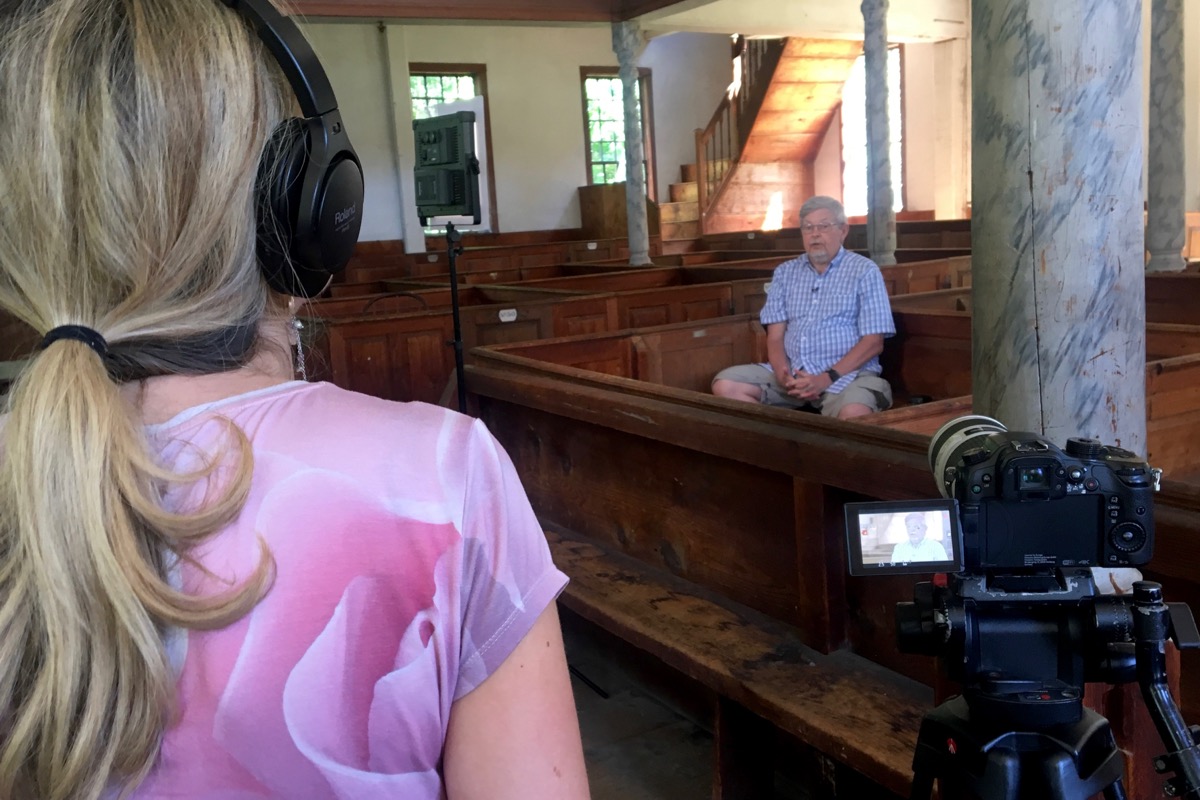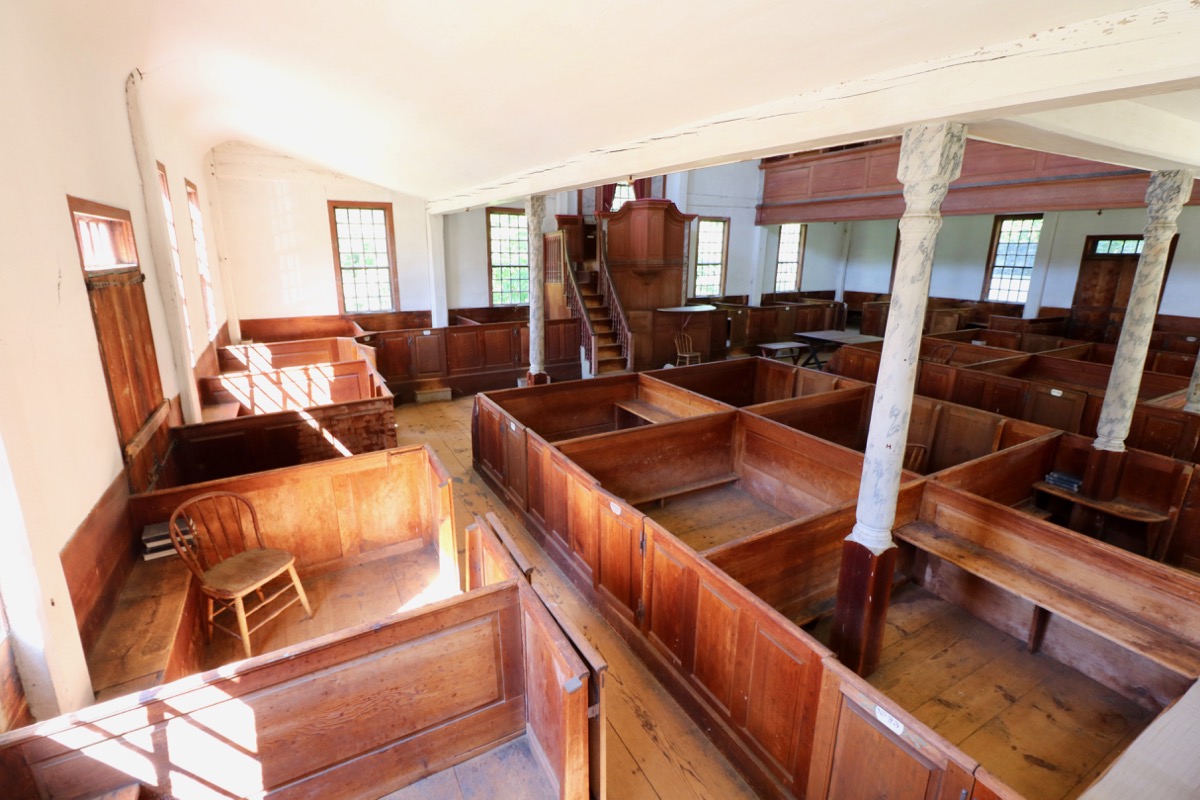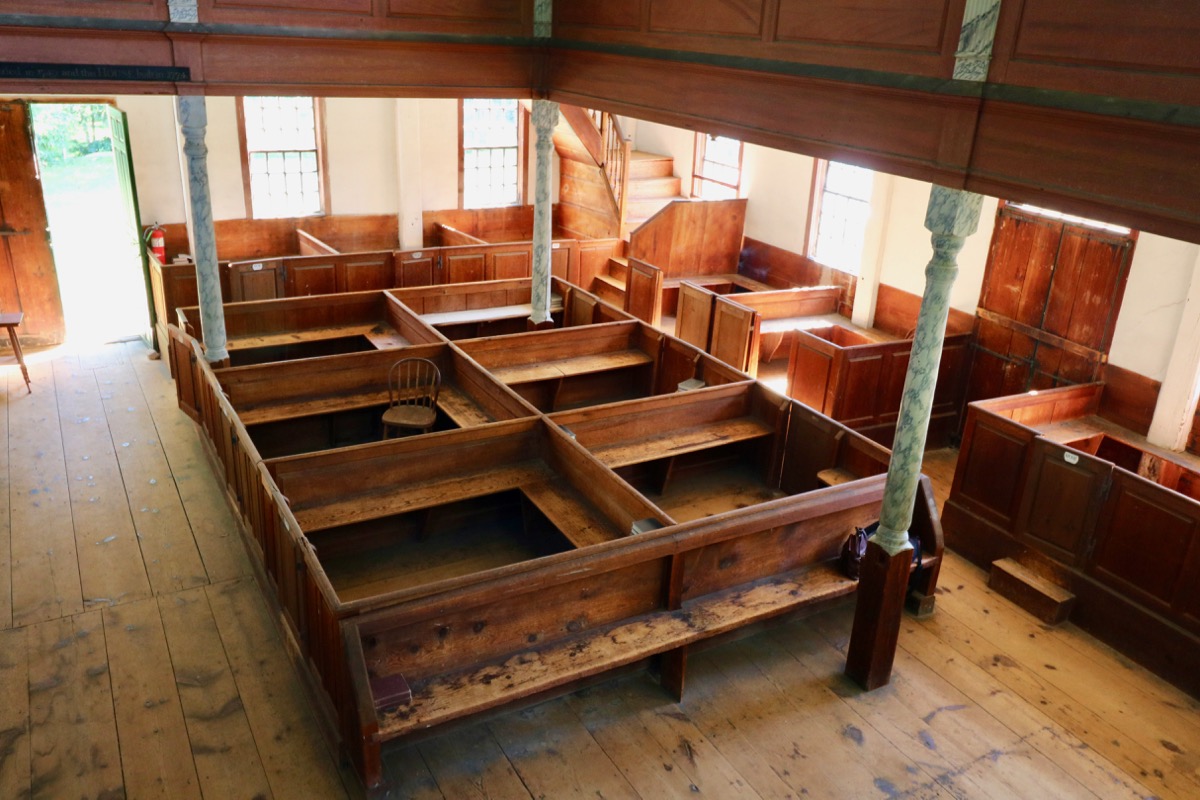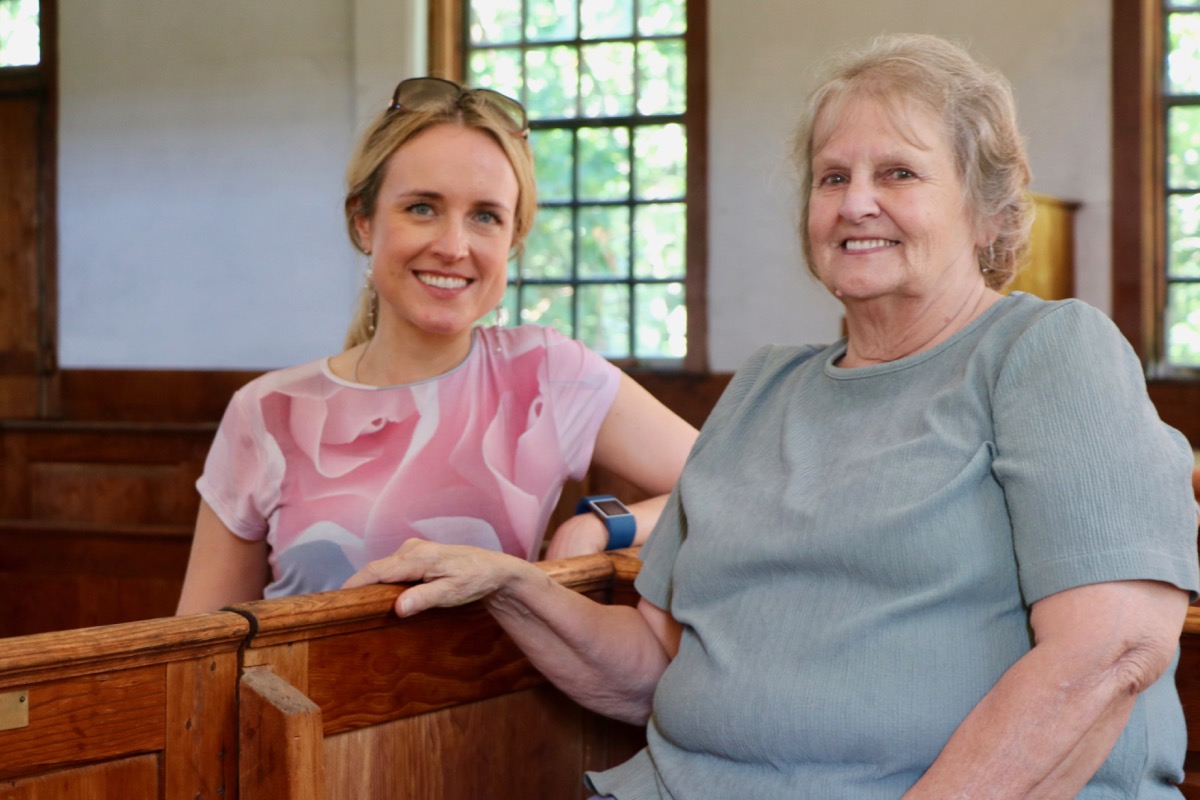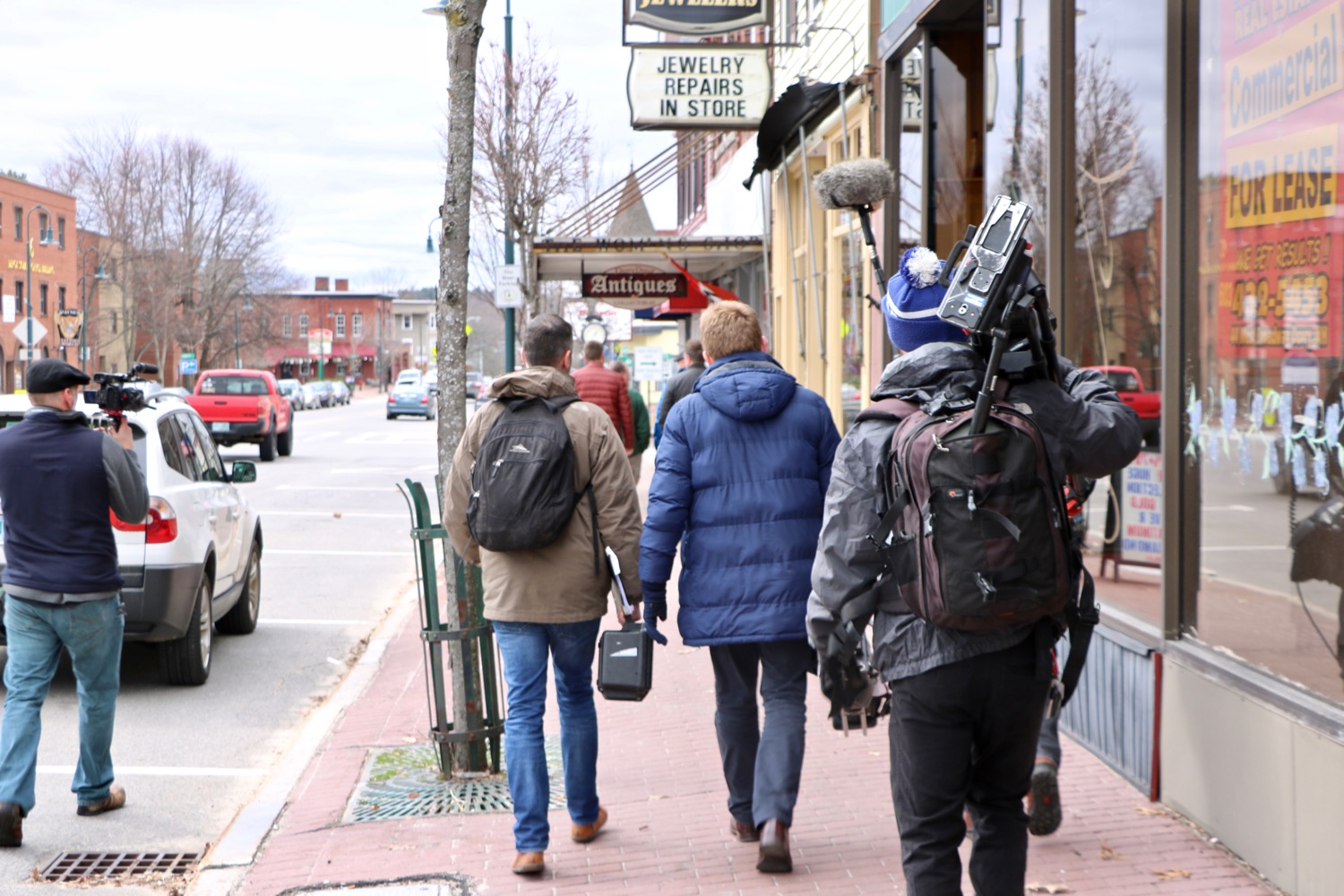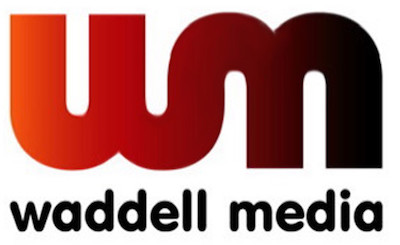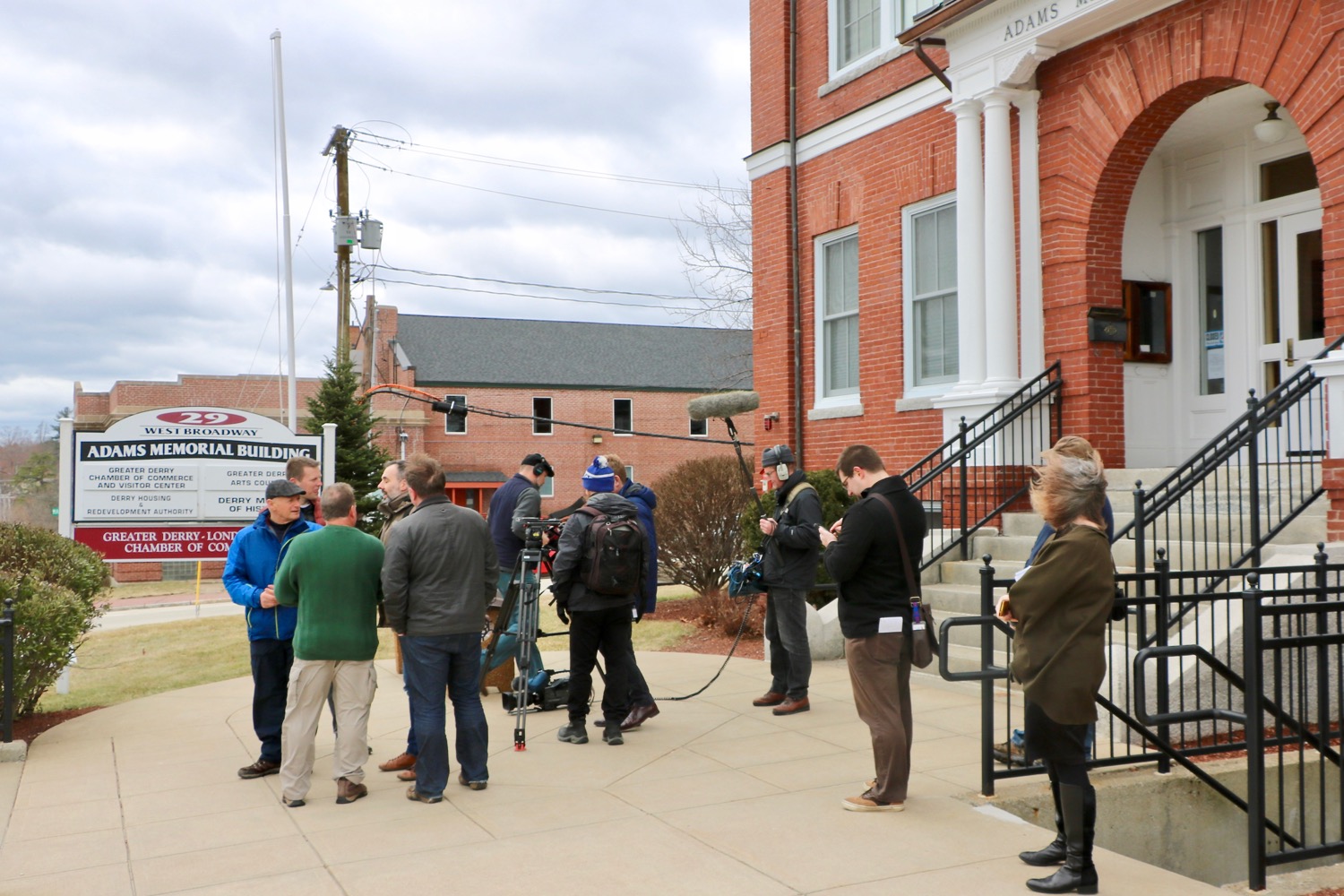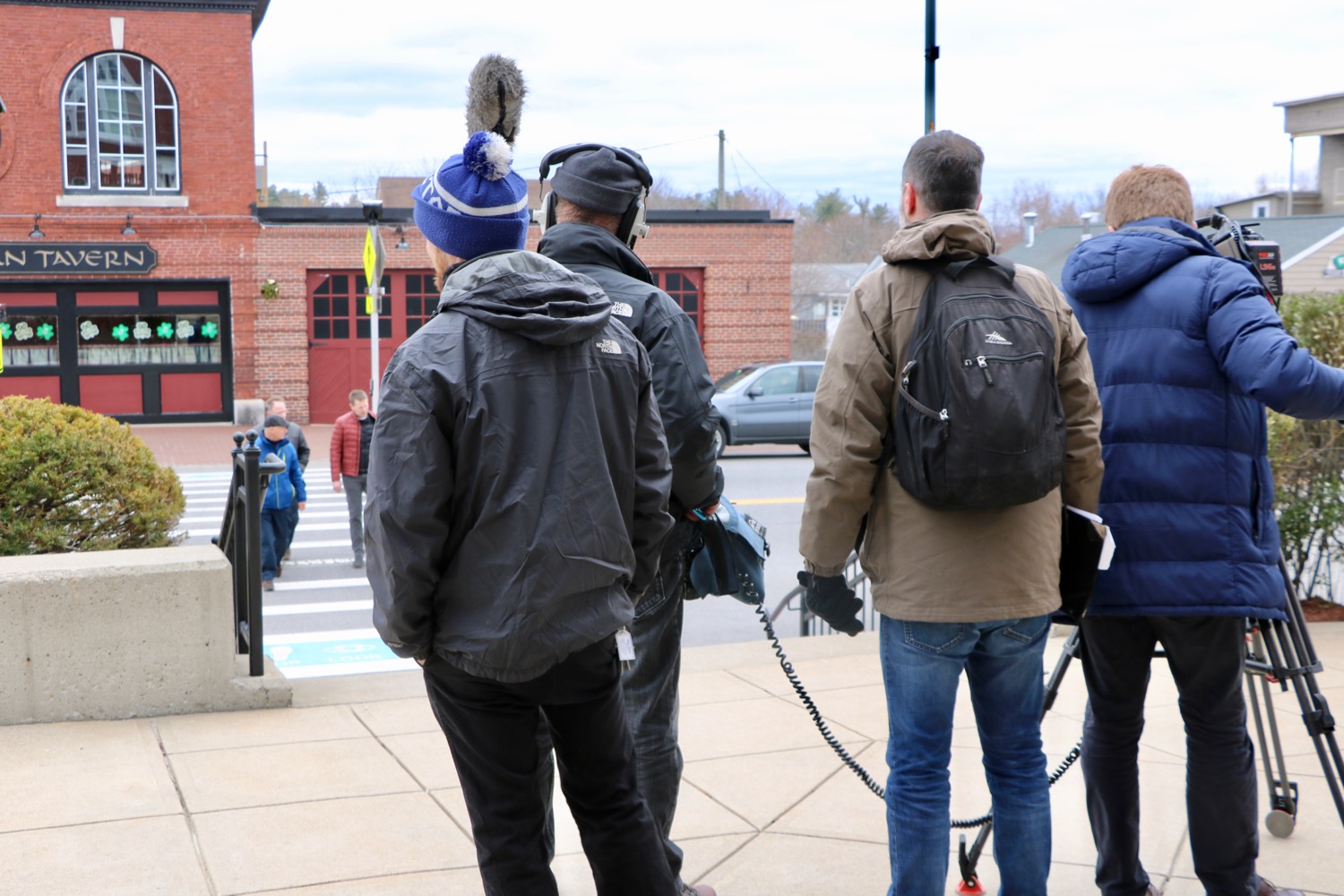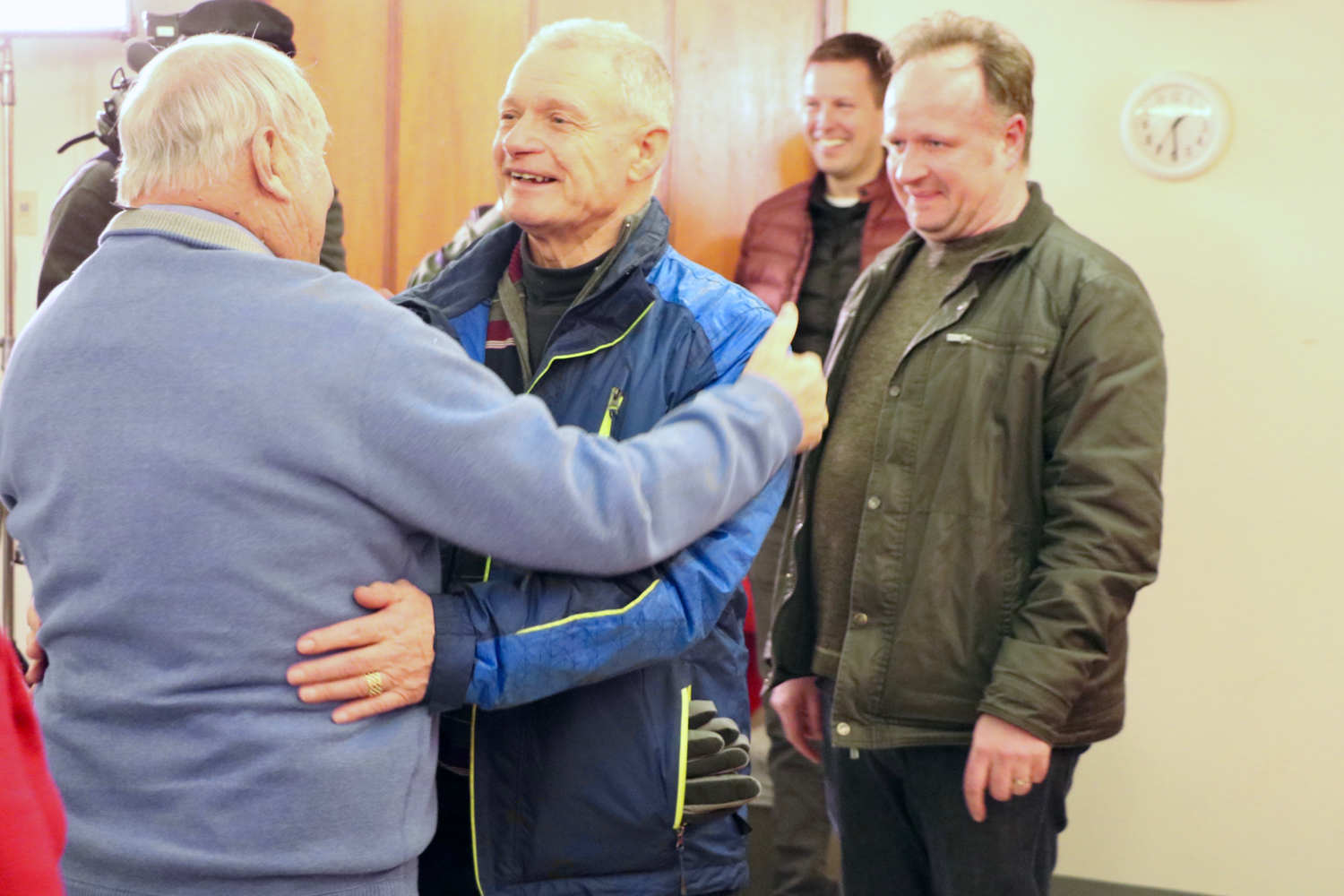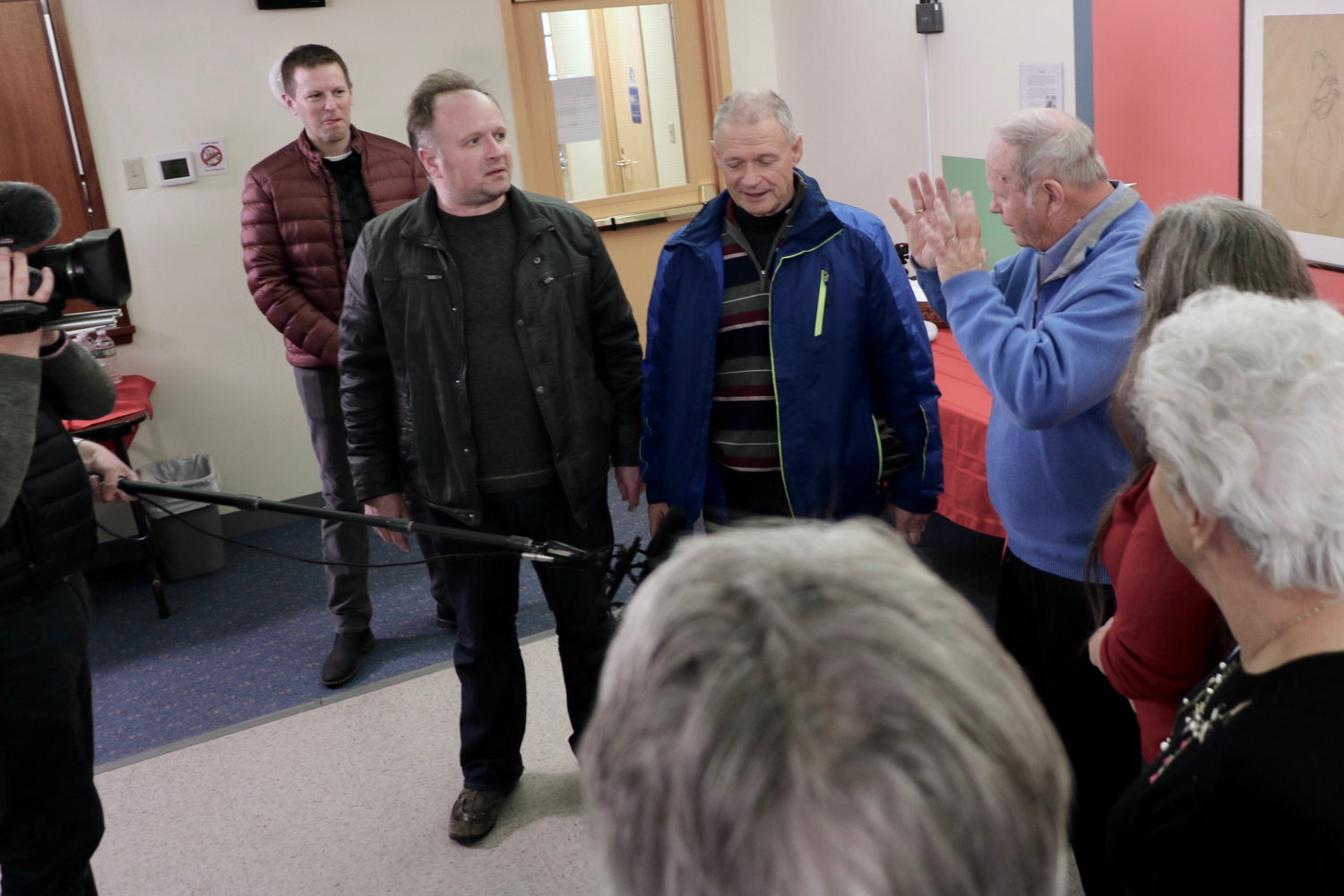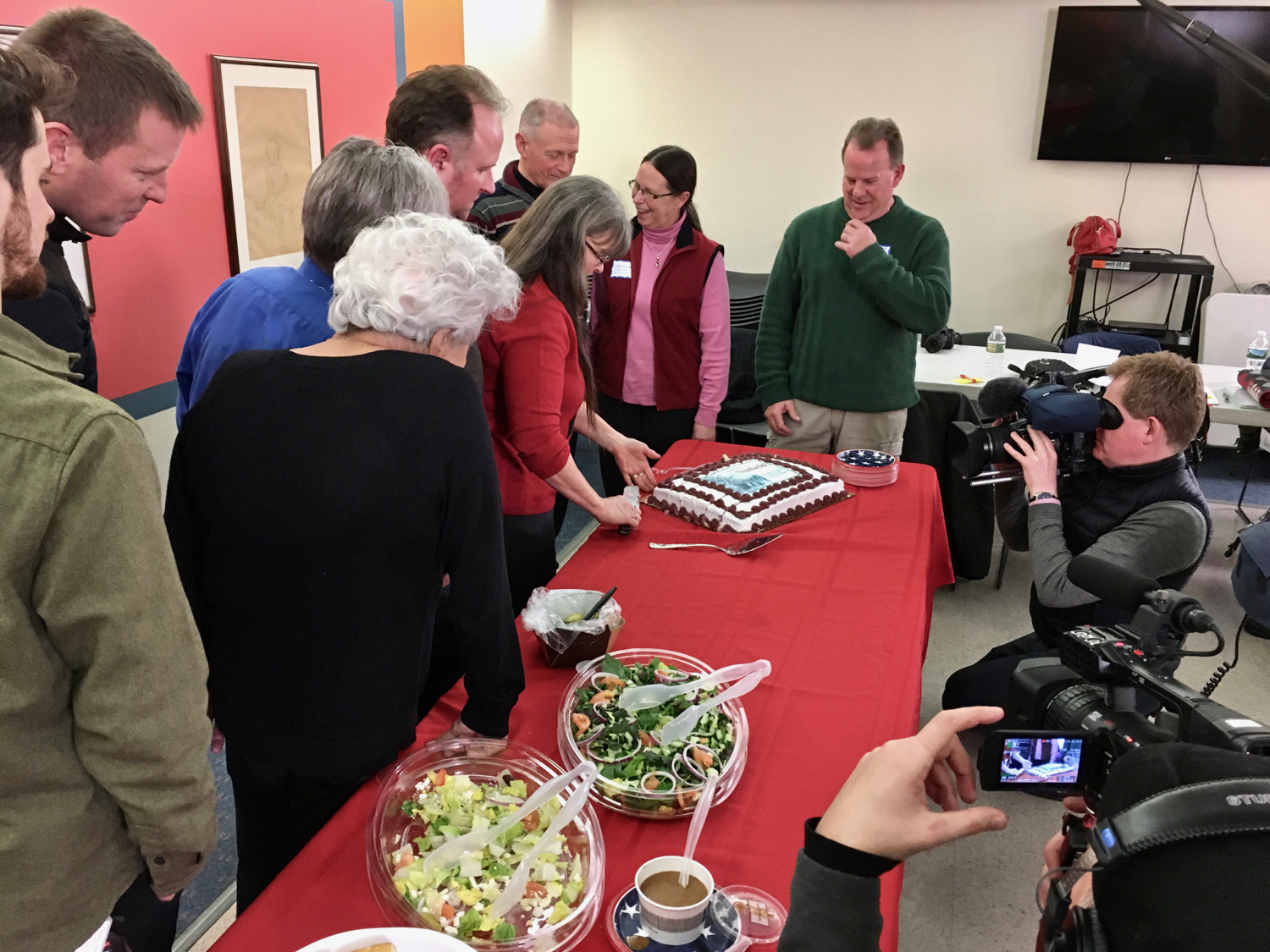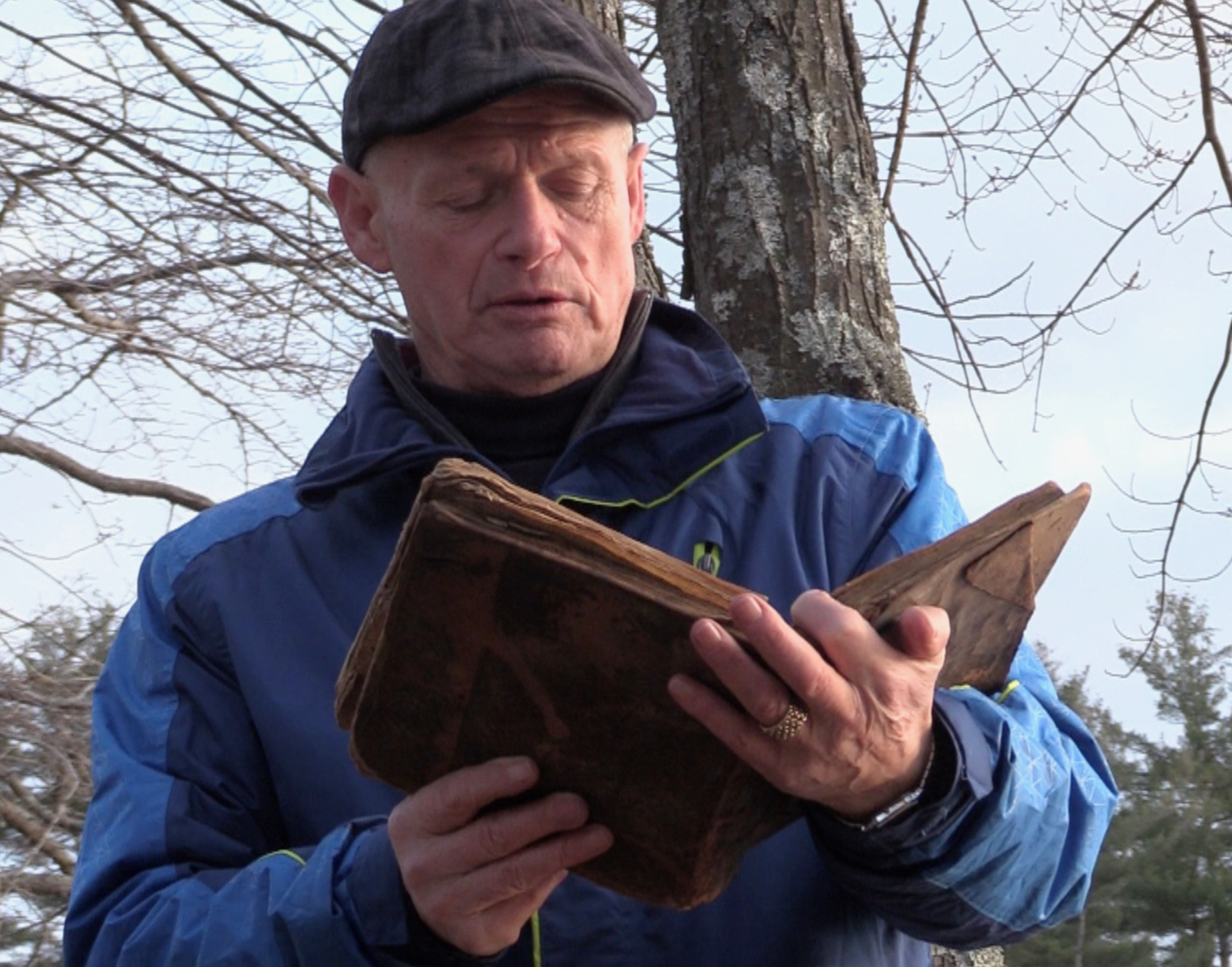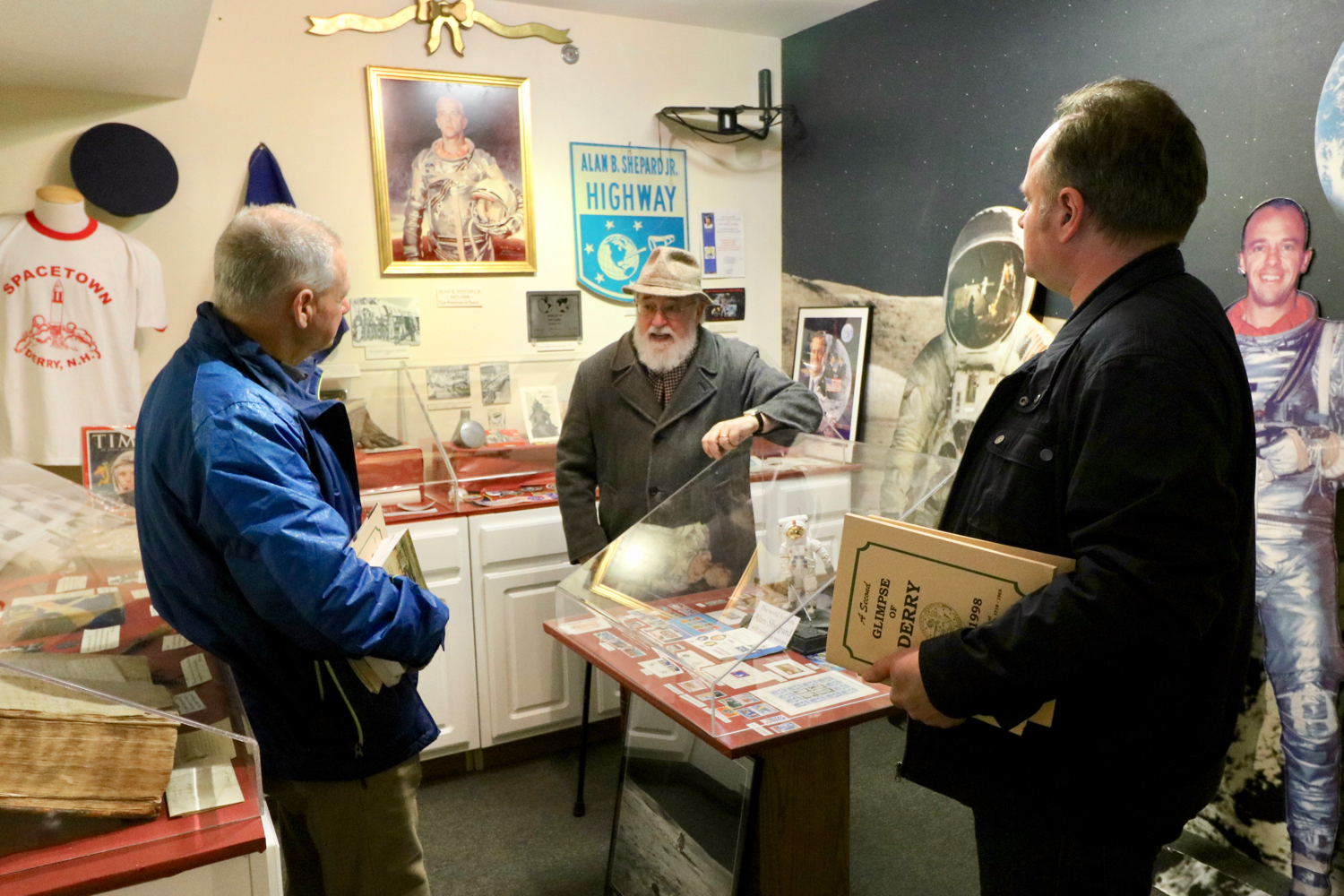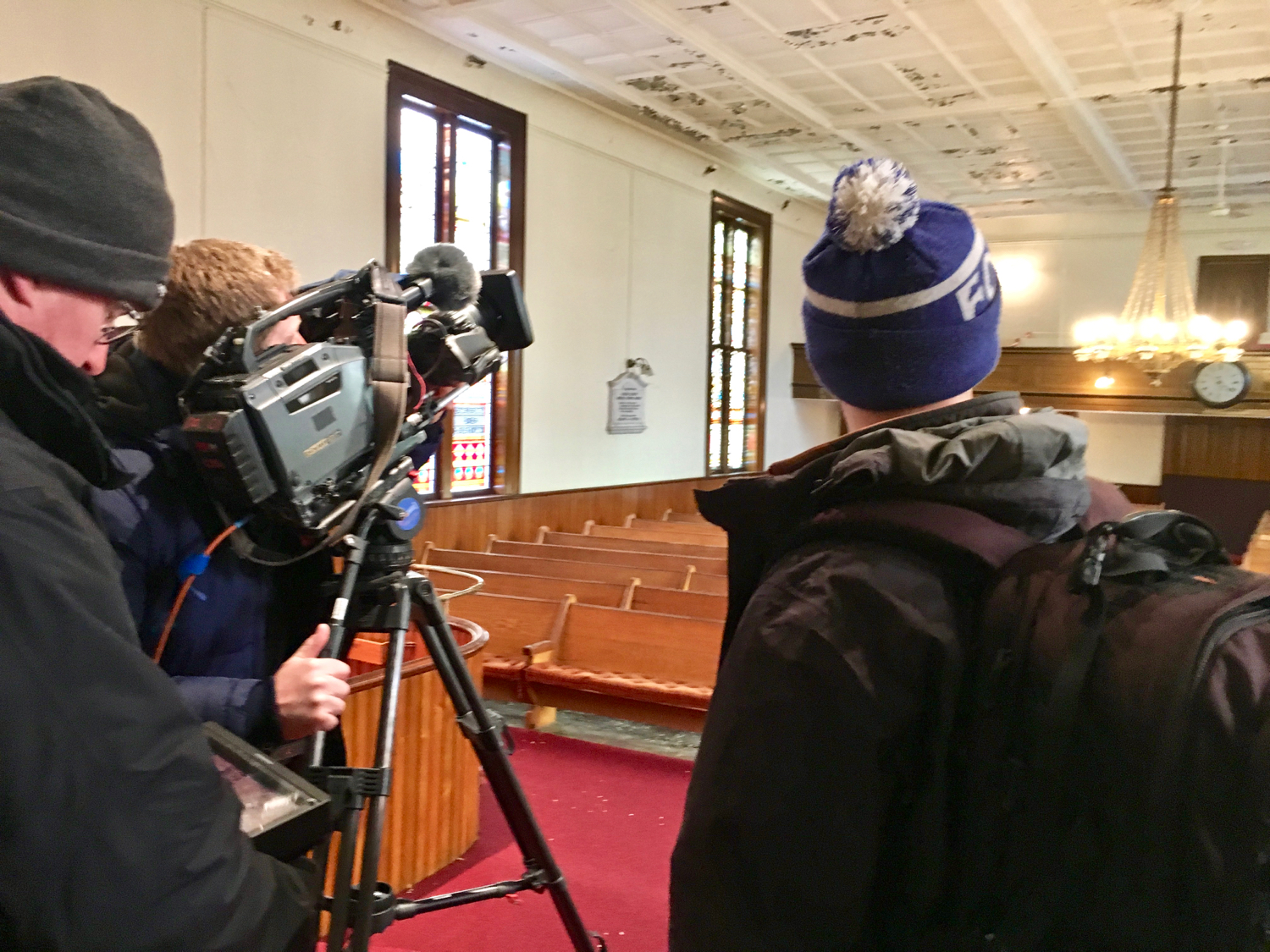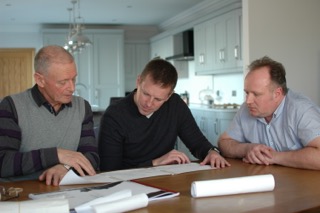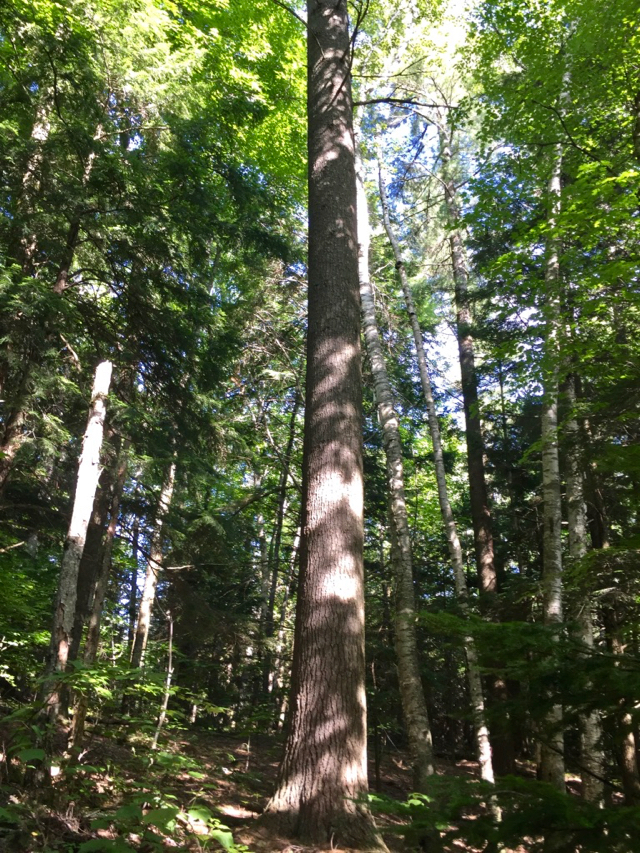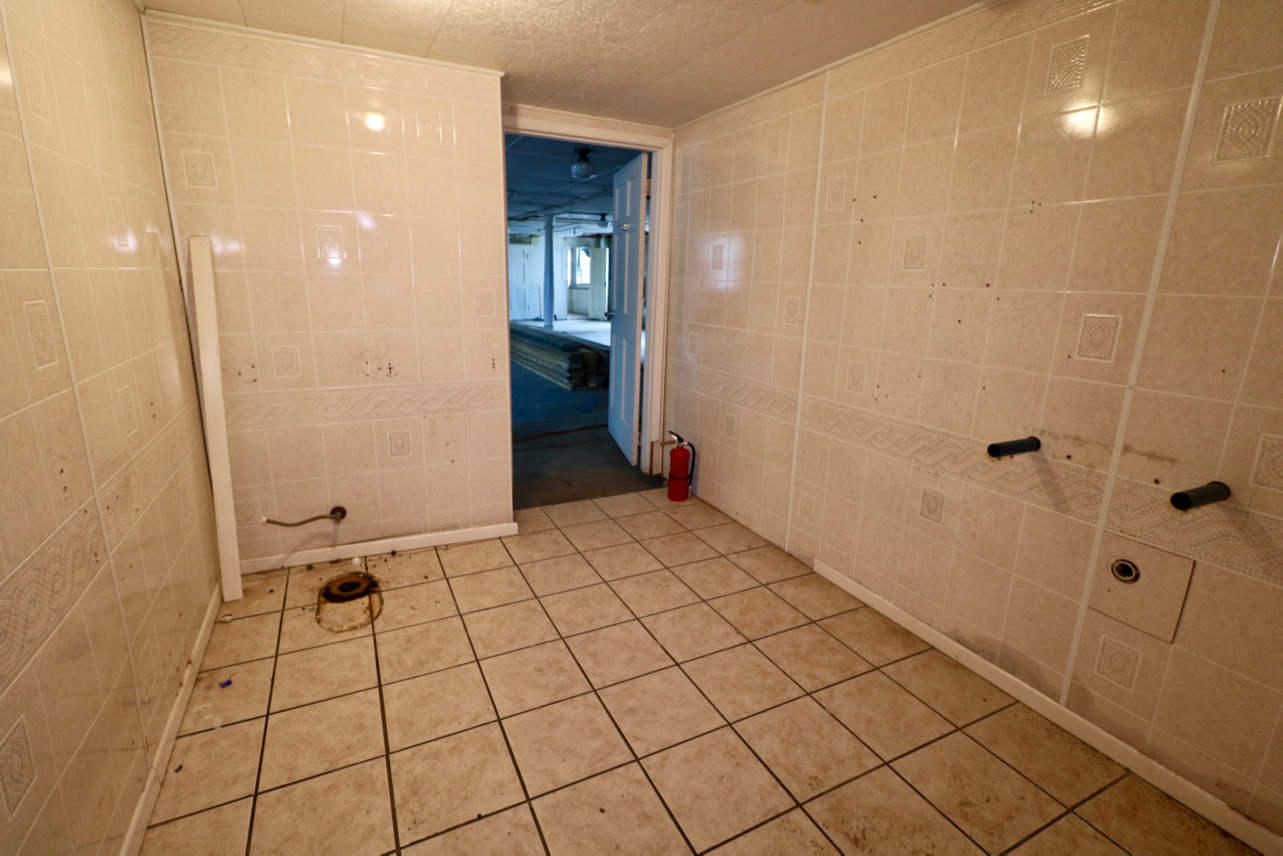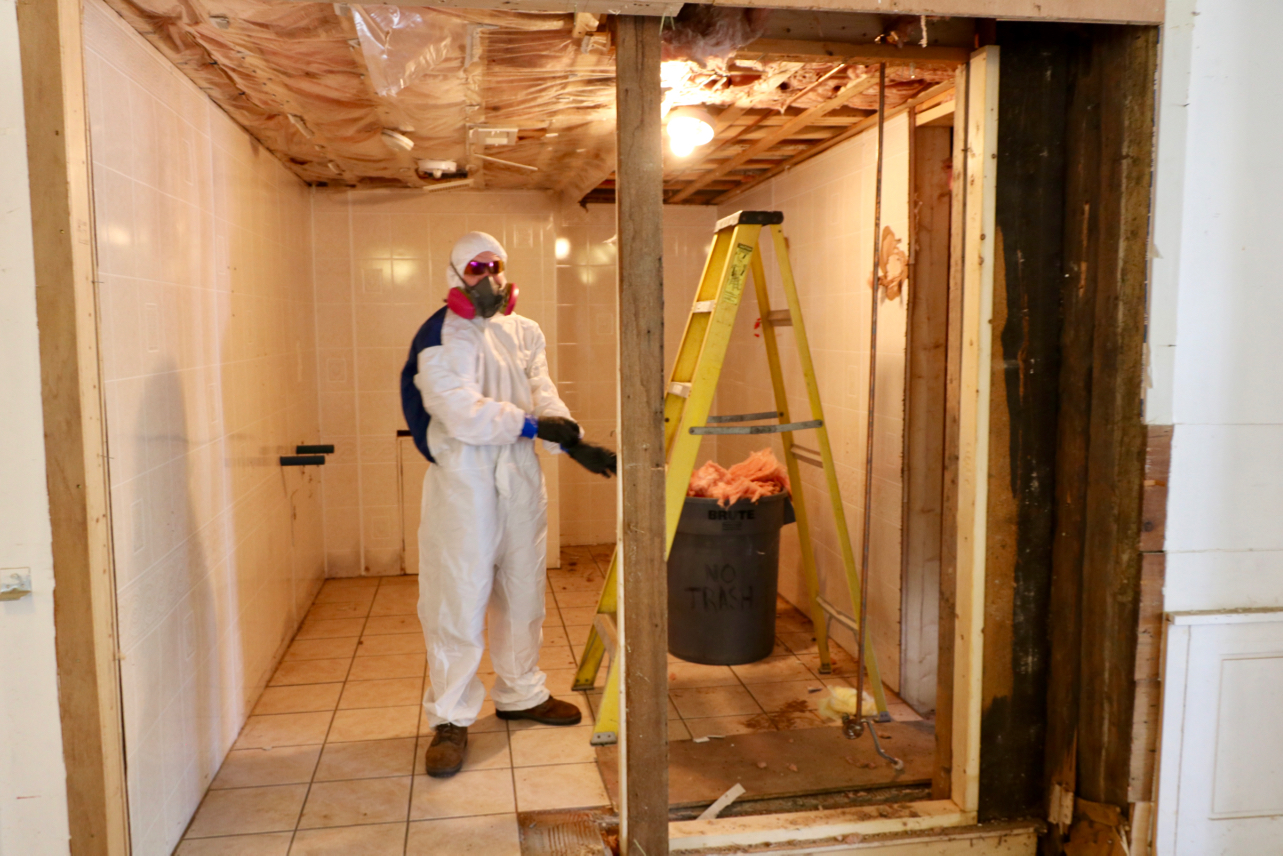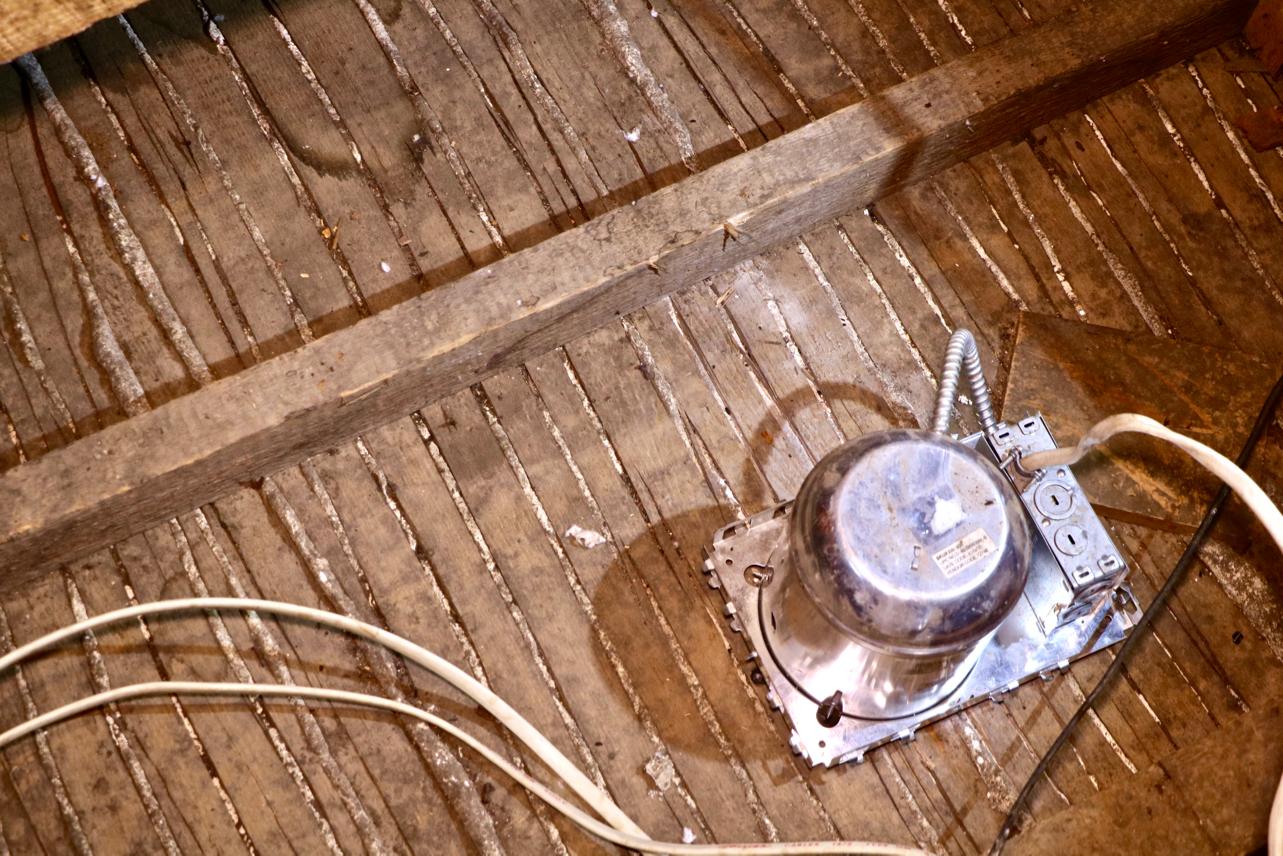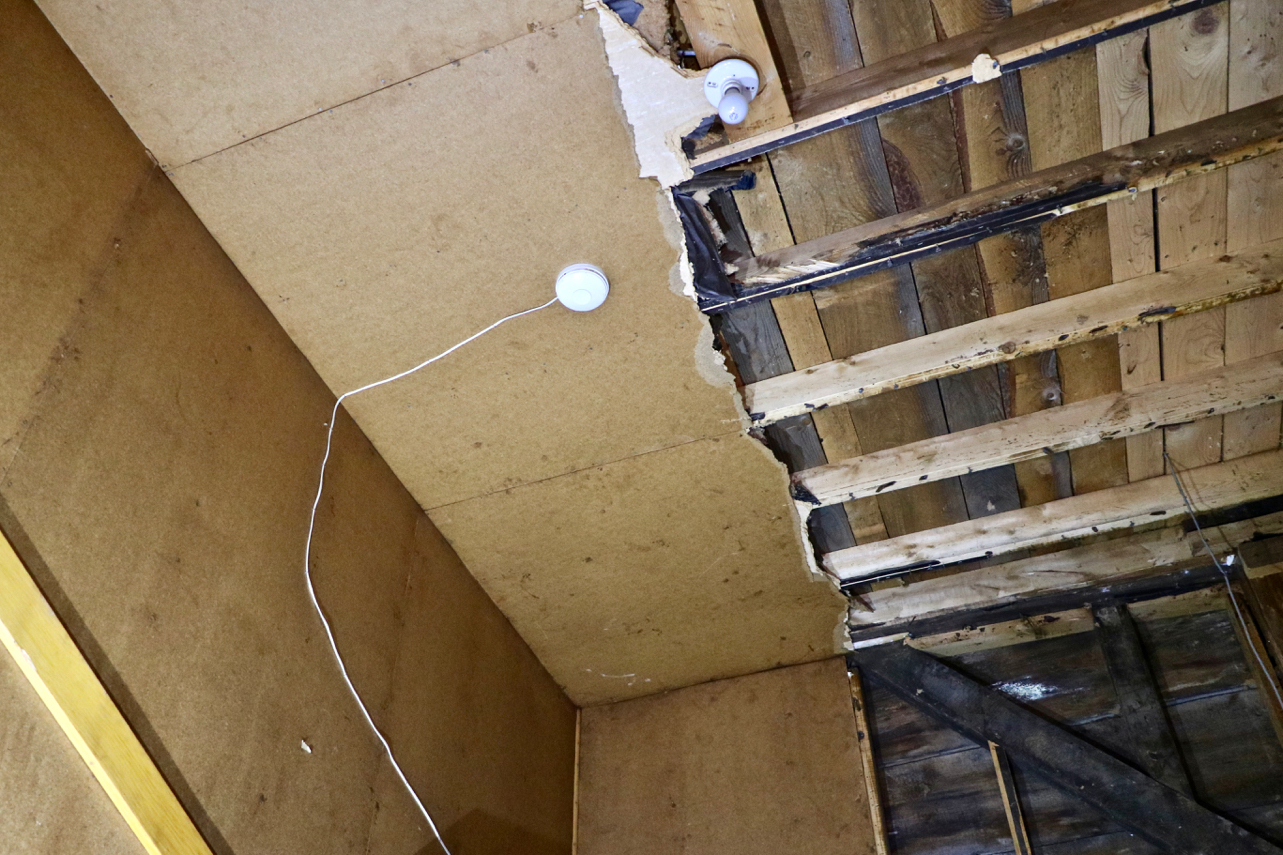
NUTFIELD HISTORY BLOG
Articles, news, and more
First Parish Preserves Historic East Derry Meetinghouse Steeple with Funding from LCHIP Grants
The $500K historic rehabilitation of the 1769 meetinghouse’s Tower and Steeple were recently completed by First Parish Church in East Derry, with funding help from two LCHIP grants.
East Derry, New Hampshire — The historic preservation team at First Parish Church is proud to announce the completion of a major phase in the multi-year rehabilitation of the church’s 1769 Meetinghouse: the repair and rebuilding of the Tower and Steeple.
The $500,000 project benefited from 2015 and 2017 grants by New Hampshire’s Land and Community Heritage Investment Program (LCHIP) totaling $155,000. The rest of the funding came from generous congregational and regional donations, which were catalyzed by the support of LCHIP and the state’s historic preservation community.
Preservation Timber Framing, Inc. of South Berwick, Maine was the primary contractor. Highlights of the large project include:
Removal of the bell and lowering of the unsafe Steeple to the ground in September 2015,
Removal of inappropriate 1990s steel beams and anchors inside the Tower,
Significant repairs to the Tower timber frame, including inserting two new 60’ tall white pine corner posts from above in November 2017,
Reconstruction of 95% of the Steeple—exactly replicating the original materials and elements while improving the internal timber frame—and lifting it back on top of the Tower in June 2019,
Application of extensive copper flashing and roofing (by The Heritage Company, E. Waterford, Maine) and refurbishing and re-gilding of the weathervane (by The Chester Gilder, Chester, New Hampshire), and
• Finishing external repairs, lead paint removal, and repainting in September 2019.
“As the continuous stewards of this community treasure since it was built in 1769 by Mathew Thornton and other early settlers, we at First Parish Church are thrilled to complete this next major step in the long effort to restore and prepare the Meetinghouse for another century of service to the church and the community,” said the Rev. Dr. Deborah Roof, senior pastor and teacher at First Parish.
“For nearly 30 years we’ve worked on historic churches, barns, community buildings, museums, homes, and more all over New England,” said Arron Sturgis, president of Preservation Timber Framing. “This Tower and Steeple project at First Parish stands out as one of the most challenging—but ultimately most satisfying—we’ve had the privilege to be part of.”
The unsafe Steeple was lowered to the ground Sept. 9, 2015.
Guiding a 60’ tall new corner post down into the Tower as a crane lowers it, Nov. 21, 2017.
Raising the restored Steeple, June 27, 2019.
About First Parish and the Meetinghouse Preservation Effort
First Parish Church was established in 1719 by Rev. James MacGregor, who led a group of Scots-Irish families from Northern Ireland to settle in the territory then known as Nutfield. The current Meetinghouse is the community’s second, and it has served both religious and civic functions continuously since its construction in 1769.
Learn more about First Parish Church at www.fpc-ucc.org.
The current historic preservation effort began with a formal study in 2012. It has seen the building raised five feet then lowered onto a new state-of-the-art foundation; the construction of an adjacent Accessibility Connector to hold an elevator serving both historic and modern buildings; numerous repairs to the timber frame, clapboards and trim; and the installation of a new, safer heating system.
Learn more about the rehab work at www.nutfieldhistory.org.
The church has invested about $1.6M so far. Initial funding came from years of donations by church members plus an internal capital campaign that raised $800,000 from the small but passionate congregation. Additional funds came from a loan with Enterprise Bank, and the successful LCHIP grants.
LCHIP grant recipients are required to at least match the grant amount dollar for dollar. Much of the matching funds for the Tower and Steeple work came from community donations through the Friends of the Meetinghouse at First Parish, a 501(c)(3) non-profit with responsibility for community fundraising.
Fundraising efforts are continuing, as the remaining work includes completion of the elevator and Connector building, rehabilitation of the upper-story Sanctuary, and the rebuilding of meeting rooms and more in the lower level.
Information on ways to donate and support this work is available at the Friends’ website, www.fotmh.org, or by emailing info@fotmh.org.
About New Hampshire’s Land and Community Heritage Investment Program
The New Hampshire Land and Community Heritage Investment Program is an independent state authority created by the legislature in 2000 with a legislative mandate to ensure the perpetual contribution of natural, cultural and historic resources to the economy, environment, and quality of life in New Hampshire.
LCHIP provides matching grants to New Hampshire communities and non-profits to conserve and preserve the state’s most important natural, cultural and historic resources., The program has provided 466 grants which have helped to conserve more than 290,000 acres of land for food production, water quality, ecological values, timber management and recreation and supported 280 projects to rehabilitate historic structures and sites.
Grants have been awarded in all parts of the state and in 167 of New Hampshire’s 234 communities. Forty-six million dollars of state money has led to a total project value of more than $317 million. The money for LCHIP grants comes from fees on four documents recorded at the Registry of Deeds in every county of the state.
For more information about LCHIP, visit LCHIP.org or call (603) 224-4113
###
Rehabilitated Tower an Steeple on the west end of the Meetinghouse; Accessibility Connector with elevator underway to the right, April 29, 2020.
300th Activities at Londonderry Old Home Day
The 120th annual Old Home Day Celebration takes place August 14–18, 2019. This hugely-popular event gets an historic theme for this year, part of the tricentennial founding celebrations of the summer-long Nutfield 300th.
Activities of special historic interest mainly take place on Saturday, August 17:
Windham and Londonderry 300th coins will be available at Londonderry Old Home Day. (A Derry coin is coming soon.)
The Old Home Day Parade runs down Mammoth Rd. from 10:15–11:45. It will feature trolley cars carrying descendents of early Nutfield families and other significant Londonderry family representatives. If you’re a descendant and would like to ride in the parade, please email your family and contact info to parade@nutfieldhistory.org so we can make room for you, and send you participation details.
Two of the booths on the Common (11:00am–4:00pm) have historic info and fun:
Stop by the Nutfield 300th Booth (#44) to learn about our shared founding story and purchase mementoes including the special commemorative 300th coins.
Visit the Friends of the Meetinghouse Booth (#43) to learn about and support the historic preservation effort underway to preserve this 1769 building on the site where Nutfield was founded.
The Londonderry Historical Society has a wonderful set of demonstrations and activities happening at the nearby Morrison House Museum, including tours, artisan demos, military reenactors, and a genealogist who’s a leading expert on the original and successive Nutfield family histories.
Read more about the Morrison House Museum activities and schedule below, and be sure to stop by and participate!
Celebrate Old Home Day at the Morrison House Museum!
From Ann Chiampa and Kay Webber, Co-Chairs, Londonderry Historical Society, 300th Anniversary of Nutfield/Old Home Day Celebration
Step back in time to the 1700s with us at the LONDONDERRY HISTORICAL SOCIETY’S MORRISON HOUSE MUSEUM on Old Home Day as we really celebrate the 300th Anniversary of Nutfield the historic way!
On our grounds you’ll be able to interact with many colonial craftsmen and women of the 1700s, see period animals at work, listen to the music of NHSCOT bagpipers and then take a Bagpipe TRY-IT class, enjoy delicious pulled pork, corn-on-the-cob, watermelon and a cool drink at our Pig Roast, and visit the Military encampment of the 1st New Hampshire Regiment which will offer cooking demonstrations, colonial games, children’s musket drills and of course, the traditional cannon firings.
Also take a tour of our c.1840 R.P. Clark & Son Blacksmiths shop and the c.1859 Parmenter Barn, and while visiting the c.1760 Morrison House Museum, see our newest display and query a noted genealogist!
Come see us all at 140 Pillsbury Road!
Traditional Craftspeople Live from 10:00am–4:00pm
Rope Maker: Bill Wasson, a retired naval officer and captain of sailing and commercial vessels, is an accomplished rope maker and rigger who will interpret the craft and demonstrate his talents with a 50’ long rope-making rig he created, while engaging help from his willing audience.
Cooper: Ron Raiselis, Strawbery Bank’s resident Master Cooper is considered to be one of the finest craft interpreters in the country, with work in major museums and private collections. He is one of the few coopers (wooden barrel makers) active in the United States. He’ll demonstrate his skills for our visitors and you’ll see why his barrels are also in high demand among the brewers of today!
Millinery Arts: Tara Raiselis, a devotee of needlework and women’s wear of the 18th century, is an accomplished needlewoman and well-known director of a museum in Maine. She brings her extensive knowledge of textiles and many wonderful examples of the millinery arts to engage you.
Photo of Larry Leonard in acrion from https://belmont.wickedlocal.com/photogallery/WL/20180430/NEWS/430009997/PH/1
Tinsmith: Larry Leonard, a fine colonial craftsman, will demonstrate tinsmithing for our guest and might even ask you to help him, offering you a hammer if you’re so inclined to try! He’ll also present a wide variety of tinware used in the 18th and 19th century New England homes. Do you have any tinware in your home? Cookie cutters or a lantern, perhaps?
Surgeon: Need an aching tooth or a musket ball removed? Colonial surgeon Greg Morin might offer aid and will describe in detail his extensive display of medical instruments as well as the treatment methods used on his patients during the late 18th century. His explanations are intricately researched and his engaging portrayal of this colonial surgeon may find you with many questions, speechless, or running for the hills!
Photo of Daniel LaCroix from http://www.strawberybanke.org/events/NH-fall-festival.cfm.
Planer and Joyner: Join Daniel LaCroix at his workbench and watch this consummate wood-worker give a hands-on demonstration of plane making and period joinery while explaining his tools and techniques. His work is prized by re-enactors and also museums for their collections and the architectural woodwork he incorporates into their buildings.
Washerwoman: Jennifer Roy goes deep into character as an indentured servant trying to pay off her passage to America. Keeping her large wash pot boiling, she continues her chores while interacting with the public, discussing her life in vivid detail, revealing the hardships that she and so many others endured for the sake of freedom.
Horn Smith: Skilled in the ancient craft of working with horn, Charles Walker demonstrates how horn was turned into many useful colonial items such as combs, cups, knives, spoons, cooking items and, of course, powder horns. It was also used in lanterns, being valued for its translucency before the widespread use of glass. Don’t forget to see the charmingly inscribed version of a young child’s school tablet he’ll display on Old Home Day!
Corn Husk Doll Maker: Bill Jennison, a longtime re-enactor, engages children of all ages in the craft of corn husk doll making. Children in both Native American and Colonial families, wherever corn was grown as a crop, used the natural dried husk of the corncob to fashion dolls. Join in on this understated, simple craft which has been an Old Home Day favorite of our visitors over the years at the Morrison House Museum.
Flax Processing: Peter Cook, a retired museum curator, is a specialist in pre-industrial textile technology. He will demonstrate and interpret the complete processing of flax from field to spun fiber in the making of linen. Nutfield was founded 300 years ago by Scots-Irish who brought with them the knowledge of linen making, and this heritage craftsman will include all the labor-intensive processes that that involved entire households in producing home-spun linen.
Weaver: Cathy Goodman is highly experienced in period weaving and spinning and uses original source materials in her detailed demonstrations. Her research for accuracy is extensive and her beautiful display of finished woven work will also include information as to the origins her designs.
Basket Maker: Karen Ziino works with a variety of natural materials to make baskets of historical and regional significance. She weaves many specialized forms such as the colonial market basket, egg baskets, those for use in the garden and the rattan Nantucket lightship basket.
Richard Wright, blacksmith. Photo from: https://www.sentinelsource.com/elf/by_hand_by_hobby/fire-hammer/article_771098d0-3c60-11e9-ab00-3fdb821731e1.html
Blacksmith: Richard Wright, the Smith River Smithy, is noted for his quality hand forged classics and museum quality reproductions. This former Londonderry resident has been actively involved in colonial living history and has volunteered at various museums around New England. He now has his own blacksmith shop, with his main focus on colonial hardware. However, he says,” You never know where the hammer will take you.” Well, we do know he’ll becoming back to Londonderry with his forge and hammers and we’re very excited that he’ll bring the colonial blacksmithing trade to life again with the R.P. Clark & Son Blacksmiths at the Morrison House Museum during this celebration of Nutfield’s 300th!
Gunsmith: This historical reenactor David Welch has been coming to the Morrison House Museum on Old Home day for many years as a Lieutenant with Captain Morrill’s Company, then with Dearborn’s Company, usually behind the cannon. We’re so glad he’ll be returning this year, now in his role as Gunsmith, and sharing his extensive knowledge of historic armament, long guns and artillery and bringing along some fine examples of muzzleloaders and muskets.
Sheep Herding: Tim and Lisa Molinaro, owners of Heartstone Farm, will bring a rare flock of Gulf Coast Native Sheep to our 300th Celebration. The sheep, a heritage breed, will be herded by working Border Collies at Shepherd Tim’s command. Lisa will narrate the action as the sheep move from pen to pen. Some shearing is also planned.
Animal Handler, Artisan Steward: Jones Gallagher, a self-sustaining farmer, animal handler and set up man, “Jonesy” will circulate on the grounds to give additional support to the animal handlers and the colonial artisans during the day. Feel free to ask him any questions you may have when you see him!
The Morrison House Museum Building Tours, noon to 3:00pm
Come visit the historic c.1760 Morrison House Museum, c.1840 R.P. Clark & Son Blacksmiths shop and c.1859 Parmenter Barn on this 300th Anniversary of Nutfield Celebration! On land generously donated by Andy Mack Sr. in 1990, these buildings, originally situated in other areas of town and slated for demolition, have all been saved by the Historical Society and moved, or taken down and moved to this beautiful property surrounded by the apple trees of Moose Hill Orchards.
Inside the Museum will be a new display that features the donation of treasured family heirlooms by two Wallace family cousins that were at our 2nd Annual Antiques Appraisal Day back in May. We’re excited about their donation and the extensive historical research that has been conducted since receiving it. We can’t wait for those two Wallace family descendants to unveil this wonderful display of Londonderry history for public viewing on Old Home Day!
Heather Rojo, Genealogist: from noon to 2:00pm
Well known for her Genealogy Blog, “Nutfield Genealogy,” now in its 10th year, Heather will be situated inside the Morrison House Museum from noon to 2:00pm to help you with your genealogical queries or point you in the right direction as how you may best use your time to find answers. Heather has been conducting genealogy research for the last 35 years and is proud of her heritage as a Mayflower descendant.
NHSCOT Bagpipe TRY-IT: From noon – 1:00pm.
Ever want to learn to play the BAGPIPE? After the ‘Pipes and Drums of NHSCOT’ march in the OHD parade, some members of the group will come down to the Morrison House Museum grounds and after playing a few tunes for our visitors, will offer a fantastic BAGPIPE TRY-IT class to 12 lucky individuals (first come, first served!) who may have an interest in learning to play the bagpipe. It’s a FREE 45-minute class, open to both youths and adults!
The Pipes & Drums of NH SCOT (https://nhscot.org/pipeband/)
The Pipes and Drums of NHSCOT is a group organized to “help build the next generation of Pipes and Drummers in support of our mission to preserve and promote Scottish culture for future generations.”
NHSCOT is “dedicated to the furtherance of dance, music, athletics and customs of the Scottish people and the continuance of the Gaelic culture.” They organize the annual ‘NEW HAMPSHIRE HIGHLAND GAMES & FESTIVAL’ at Loon Mountain, this year on September 20-22.
1st New Hampshire Regiment:
Encampment from 10am-4:00pm;
Cannon firing from 12:00pm-4:00pm.
It wouldn’t be Old Home Day at the Morrison House Museum without a military encampment and live cannon firings! Come join this American Revolutionary War reenactment group from 10:00am to 4:00pm as the women in camp give cooking demonstrations, offer young visitors colonial games to play, and run the day-to day operations of this 1770’s encampment. Their Men at Arms will return to camp after marching in the OHD parade and will encourage children who visit the encampment to “Train and Drill” with them. Of course, the Regiment will be giving demonstrations throughout the afternoon and firing their muskets and loading and firing their trusty canon hourly, with a big finish during the last hour.
Their background: the First New Hampshire Regiment reenactment group was founded in 1973. They’re based on the original Regiment, created by the Provincial Government of New Hampshire on May 22, 1775, that fought in many battles during the War for Independence. The first commander of the original regiment was Londonderry’s Colonel John Stark.
PIG ROAST!
Enjoy a lunch of pulled pork, corn-on-the-cob, watermelon and a cool drink on a wonderful day celebrating Nutfield’s 300th at the Londonderry Historical Society’s Morrison House Museum! What could be better! Londonderry resident Eric Turcotte, a good friend of the Historical Society and owner of ‘Turcotte Tree Service’ is actually donating the pig, having it prepared, and is roasting it starting Friday night, on site, to be ready at lunchtime for our guests on Old Home Day. We can’t thank Eric Turcotte enough for his generosity!
Please come and support the Londonderry Historical Society and enjoy this wonderful meal for a suggested donation of $5 to go towards needed repairs to our buildings, especially the Morrison House roof and entry.
Finally, on this historic 300th Anniversary of Nutfield, we hope all our efforts put forth to preserve the History of Londonderry over the years show how much we care about this town, and we offer our heartfelt gratitude in appreciation of all the kindness and incredible support of the wonderful residents of Londonderry! Thank you all!
Ann Chiampa and Kay Webber, Co-Chairs
Londonderry Historical Society – 300th Anniversary of Nutfield/Old Home Day Celebration
Telling the Nutfield Story: Ulster-Scots Videos
Videos on the 1718 MIgration from Northern Ireland and the settlements of Nutfield in New Hampshire and near Portland in Maine.
The Nutfield 300th anniversary celebration isn’t just important to our towns of Londonderry, Derry, Windham and Derryfield, but also to those “back home” in Northern Ireland. Accordingly, this past August the Northern-Ireland based Ulster-Scots Agency invested considerable resources in sending a professional film crew over to capture scenes and interviews from old Nutfield and the similar early settlements in Maine (see blog post to the right).
The resulting video productions are available to watch below. These include:
an introduction to the project by Richard Hanna, Director of Education and Language for the Ulster-Scots Agency, Belfast, Northern Ireland,
a short piece focused on Rev. MacGregor’s establishment of Londonderry and Derry,
a broader look at the 1718 MIgration and journey of the Scots-Irish from Ulster to Nutfield and Maine, and
a comparison of the parallels—and differences–between Belfast Maine and Belfast Northern Ireland.
FIrst up is the brief introduction by RIchard Hanna.
This first video from the Nutfield and Northern Ireland collaboration starts with Rev. James MacGregor’s journey and ends showing the interior of a meetinghouse still very much like the original version of that at Rev. Macgregor’s First Parish in East Derry.
This next video covers the 1718 journey of Rev. MacGregor’s company from his home parish in Aghadowey Northern Ireland to New England, and their settlements in Nutfield and in Maine. It includes a sentiment expressed by our local TJ Cullinane on the challenges of the early settlers that applies well to our goals for the whole 300th celebration:
“[If} people today, so preoccupied with their own troubles, … would only look back into their own history, they’d see that what they’re contending with today pales in comparison with the trials and tribulations of the First Settlers. ”
This final video in the series focuses on Belfast Maine—founded by members of Rev. MacGregor’s contingent who journeyed north of New Hamshire and ended up staying—and its parallels with Belfast Northern Ireland.
We hope these videos have provided a bit of historical info and enthusiasm for the upcoming Nutfield 300th celebrations here in Derry, Londonderry, Windham, and the Derryfield portion of Manchester. Visit the Nutfield 300th Page to learn more, and follow the Nutfield 300th on Facebook for updates.
Forest Hill Cemetery — Early Settlers Plot Refurbishments
Refurbishments in Forest Hill Cemetery for the Nutfield 300th focus on the historic plots in the Early Settlers area.
One Nutfield 300th project the Derry Heritage Commission has underway is the refurbishment of the early settlers plots in Forest Hill Cemetery.
This row of headstones includes Rev. James MacGregor—the “Moses of the Scotch-Irish” and founder of Nutfield who was buried in 1729—and his wife and sons and their wives. For perhaps a century it was surrounded by an iron fence, and in recent years sported a street sign identifying the “First Settler.”
The iron rods in the fence obscured the stones, and the handsome iron posts at the corners and midpoints of the fence needed refreshing. Local historian and Forest Hill Cemetery authority TJ Cullinane has been working with monument experts Cornerstone Cemetery Services LLC to develop a new, refined design to mark and protect these treasured headstones.
The new design will reuse the iron posts, first stripping, repairing and repainting them to restore their original appearance. The iron rods will be replaced with chains, which can be moved out of the way for occasional photography or videography. A new, distinguished granite post already in place identifies the plots as those of the “Early Settlers.”
From TJ Cullinane:
”It’s heartening to see the support from the town and its residents for improving the First Settlers lot in honor of the Nutfield 300th observance. Equally gratifying is knowing that this support extends to our ancestral homes overseas, as this sacred spot continues to be a magnet for historians and documentary producers from throughout the North of Ireland and Scotland.”
Filming in Forest Hill for a BBC documentary (June 2012), by Waddell Media for a
BBC show on MacGregor’s descendants (March 2018),
and MacMillan Media for the Ulster Scots Agency (August 2018).
The work also includes refurbishing nearby historic gravesites, whose dilapidated condition detracted from the overall appearance of this historically significant area. Two have been completed already:
A table stone memorializing Thomas and Martha Steel
-An upright marker commemorating Robert and Dolly Taylor
Cullinane further commented:
“Here in Derry, we hold ourselves to the high standard set by the legendary British Prime Minister William Gladstone who wrote, ‘Show me the manner in which a nation cares for its dead and I will measure with mathematical exactness the tender mercies of its people, their respect for the laws of the land, and their loyalty to high ideals.’ I strongly feel that we are meeting Gladstone's standard and perhaps exceeding it."
All the work should be completed in time for Founders Weekend (April 12–14, 2019), when the Early Settlers plot and the rest of the historic Forest Hill Cemetery will be featured in tours and talks.
Nutfield 250th Commemorative Medals
About the sets of commemorative medals cast for the Nutfield 250th Anniversary Celebration in 1969.
The 250th Anniversary celebrations in 1969 included a set of commemorative medals, one each for Derry, Londonderry, and Windham, with common Nuffield art on the opposite side. These were produced in both silver and bronze, and sold as collectible souvenirs of the anniversary.
A leaflet included with the coins explained the meaning of their artwork, and gave a version of the Nutfield founding story and early history. The text from that leaflet follows, along with photos of the medals.
This 8” pantograph plate was used by the medal minter to mechanically trace the 3D artwork design in smaller size to produce the medals. Courtesy of the Derry Museum of History.
Cover of the leaflet included with the 250th commemorative medals set.
ABOUT THE MEDALS
Three medals (one for each of the three towns. Derry, Londonderry, and Windham) have been struck to commemorate the 250th Anniversary of Nutfield. Three different reverse town sides have been matched with the one common obverse side of Nutfield.
The dies for the four sides were struck by the Robbins Co. of Attleboro, Mass. from pieces sculptured by Mrs. Patricia Verani of Londonderry, N. H. The Derry side was sculptured by Mrs. Verani from a sketch prepared by Mrs. Jean Wyman of Derry. N. H. The Windham side was sculptured by Mrs. Verani from a sketch of a design prepared by Mrs. Diane Gulden of Windham, N. H. Mrs. Verani prepared both the sketches and sculpturings for the Londonderry and Nutfield sides of the medals.
NUTFIELD SIDE (common to all three medals)
The obverse or Nutfield side of the medal is symbolic of many of the early settlers' experiences. The musket and Bible are representative of Rev. MacGregor and his first sermon. Nutfield was so named because of the many nut trees found in the area which are represented on the medal by the chestnut, chestnut leaves, black walnut, and butternut leaves. Also important to Nutfield was the development of a linen industry which is represented by the flax blossoms. The settlers introduced the Irish potato to North America. and this is represented by the potato. The old map of Nutfield shows how the town was divided into what we now know as Londonderry, Derry and Windham.
DERRY SIDE
The Derry side of the medal is represented by three of its most historically known citizens. Dr. Mathew Thornton was born in North Ireland in 1714. The family migrated to Worcester, Mass. in 1718, where he obtained Isis medical education. He started bis practice in Derry. During the years he lived in Derry he became very interested in the political problems of the colonies and presided over the provincial convention of 1775 and 1776. He later became one of the signers of the Declaration of Independence and spent the rest of his life helping to form the new country.
General John Stark, a native of Derry, was born on August 28, 1728 and died on May 8, 1822. General Stark was well known for his heroic action at Bunker Hill, and later at Princeton and Trenton. On August 16, 1777, near Bennington, Vt., he defeated two detachments of Burgoyne's army. For this vic-tory Stark received a commission as brigadier general in the Continental Army and continued to serve until the end of the war.
Alan B. Shepard, also a native of Derry, on May 5, 1961 was America's first man in space aboard the Freedom 7 spacecraft. His flight lasted 15 minutes, reaching an altitude of 115 miles and a top speed of 5100 mph. He landed in the Atlantic Ocean and was promptly recovered by helicopter and transported to the aircraft carrier Lake Champlain.
Each of these men pioneered a new frontier and will be remembered for their unselfish contribution for a better life for all.
LONDONDERRY SIDE
The Londonderry side is represented by the flaxwheel, spindle and the linen seal which are all symbolic of the linen industry for which our early settlers were famous. Flax was raised and processed on the farm and loomed by the men. The spindle, used with a distaff is the earliest instrument employed for spinning thread. The quality was such that in 1748, Londonderry linen weavers were granted their own seal to be applied to each length of cloth to distinguish it from other linens of lesser quality.
The linen seal located at the bottom edge is a duplicate of the actual seal applied to the many linen products made by our early settlers and became well known as syxnboliz-ing a work of quality.
The museum room in Monticello, home of Thomas Jefferson in Charlottesville, Virginia has on display shirts worn by George Washington and Thomas Jeffeison which clearly show the seal of the Londonderry linen weavers.
WINDHAM SIDE
The Windham side of the medal is represented by a shield and cross, indicative of our early settlers' strife in Ireland and their strong Christian ties. In the upper left of the shield is a scroll and acorn. The scroll represents the charter of the original land grant, while the acorn is symbolic of the continual growth which the area has experienced since the first settlement was established.
The open volume is significant of the progressive approach Windham has taken in its school system and the fervent interest of the community in the education of its young people.
The ducks in flight are representative of Windham's love for its woods and fields, streams and ponds, and its sincere interest in conserving these natural beauties.
The balance scales represent our just form of government — Town Meeting — whereby each citizen has the right to voice his opinion, from those townspeople whose ancestors settled this land to the new residents whose backgrounds are multi-faceted and diverse, yet all with a common interest — the betterment of our community as lt stands in its relationship to our state, our nation and the world.
HISTORY OF NUTFIELD
The story of Nutfield is one of the heroic memoirs of the American colonization. Nutfield was settled by Scots as the result of British oppression. The English parliament passed laws which were oppressively felt in Scotland by the Presbyterians. Early in the 17th century thousands of these Scots passed over into Ulster in Ireland and resettled that community under favorable terms of the King of England. They did not intermarry with the Irish or agree with them on matters of government and religion. There was strife which culminated in the memorable siege of Londonderry, the chief port of Ulster, in 1688 and 1689. The Scots Protestants and the Irish Catholics strove for individualism with such bitterness that at length the bolder souls among the Scots, failing to get the measure of freedom which they had been led to expect, emmigrated to the new world.
Upon arriving in America, some of the immigrants went from Boston to Worcester. The Nutfield colonists journeyed to Casco Bay, Maine with a view of exploring that territory. There they spent the winter of 1718 and 1719 and suffered severely from the cold and a scarcity of food. In the spring they sailed down the coast and up the Merrimac River to Haverhill from where they explored the tract of land named Nutfield.
On April 11, 1719 there arrived in what is now Derry sixteen families of Scotchmen from Londonderry, Ireland. On April 12th the Reverend James MacGregor delivered, under a spreading oak on the east side of Beaver Pond, the first sermon preached in town. His text was from the in prophecy of Isaiah 32:2.
The colony was a great success. Soon there were seventy families. The first settlers built their homes of logs on lots of ground only thirty rods wide and one mile long in order to protect themselves against the Indians. In two years they had a church edifice built of good timbers and well finished at what is now East Derry, near the site of the present Congregational Church. Able-bodied men attended divine worship fully armed against Indian raids and there is still preserved the musket which the first minister, Rev. MacGregor, habitually carried into the pulpit.
The settlers purchased the territory from John Wheelwright by a deed that was drawn up in Boston on Oct. 20, 1719. This John Wheelwright was the grandson of a minister of the same name who had bought the land from the Indians in 1629. On June 21, 1722 the settlers received a charter from the King of England confirming the title to the town on condition that once a year they should pay the king a quit-rent of one peck of potatoes forever and should reserve for the royal navy all the pine trees in the town suitable as masts for ships. The name of Nutfield was changed, by the King, to Londonderry at this time. Londonderry was again to have a change and this resulted in the forming of three towns that are presently known as Londonderry, Derry, and Windham.
Film Crew Travels from Northern Ireland to Capture Nutfield Stories
A film crew from Northern Ireland visited Derry and Londonderry NH for two days of filming historic sites and interviews for the Ulster Scots Agency.
The worldwide historical significance of old Nutfield was made vivid once again by the visit of a film crew from Northern Ireland on August 9th and 10th, 2018.
May 2018 issue of The Ulster Scot publication (download PDF)
Production house Macmillan Media in Belfast, Northern Ireland, sent the crew to work on projects commissioned by the Ulster Scots Agency. That agency works to educate the world about and vigorously promote the importance of the Scots-Irish heritage worldwide. They have been instrumental in this year’s 1718 Migration activities—which mark the 300th anniversary of the departure of Rev. James MacGregor and other Scots-Irish early settlers from Northern Ireland—and will probably be helping with our own 300th anniversary celebration of the founding of Nutfield by those settlers next year.
Jane Veitch and Matt Gould, the visitng film crew for MacMIllan Media
The visiting Macmillan Media crew included producer/writer/presenter Jane Veitch, and videographer/drone pilot Matthew Gould.
Arriving at Logan Airport Wednesday afternoon, they traveled to their temporary Nutfield home in the beautiful Stillmeadow B&B before spending two very full days of local filming (described below).
On Saturday they headed up to Maine for filming of more northern Scots-Irish historic sites. They also participated in the week-long international 1718 Scots-Irish Migration and Family Reunion conference at Bowdoin College conducted by the Maine Ulster Scots Project.
Telling the Nutfield Story
Jane and Matt were focused on capturing video of historic places and artifacts as well as doing interviews with local experts and descendants.
Unlike other commercial filming outfits we’ve hosted, the videos they produce will be available to us as we work with the Ulster Scots Agency to spread the word of Nutfield and our upcoming 300th anniversary.
This mostly pictorial article gives a look at how the filming experience went, only lightly covering the actual historic subjects that got filmed. (We'll see more once Jane and the Macmillan home team finish the significant editing and production work.)
The filming site map.
Where Nutfield Began: the Meetinghouse at First Parish
We started Day 1 (Thursday) suitably enough with an introductory and planning meeting at the Meetinghouse.
SInce its construction in 1769, this historic building has been the continuous home to the church community Rev. MacGregor founded. It’s the second First Parish Meetinghouse, built to accommodate the rapidly growing community’s civic as well as religious needs, and it has undergone significant changes as that community evolved.
The Macmillan Media team got a tour and then filmed scenes throughout the building. The 1884 MacGregor family stained glass window in the Sanctuary was of particular interest. See the team in action—plus some other shots of the Sanctuary and exterior in—the photos.
Meetinghouse Preservation Project
We are halfway through a $2M project to rehabilitate the entire Meetinghouse following strict historic preservation guidelines. Learn more in this 30-minute presentation to the Derry Town Council, and help support this work by visiting the Friends of the Meetinghouse site
Downtown Derry: History Museum, Library, and an All-American Lunch
From the Meetinghouse on the hill we went down to the Derry Museum of History in the Adams Memorial Building on West Broadway.
There curator Mark Mastromarino gave a tour of the Museum’s huge collection of reference-quality artifacts and documents which cover all of the community’s three hundred year heritage. He then did a gracious and informative on-camera interview, and with this first Derry interview "in the can" the crew was visibly excited about the sort of footage they would be capturing on this trip.
Next we drove to the Derry Public LIbrary, which has been largely made possible by a gift from MacGregor descendants. In the special local history research space—the New Hampshire Room—Matt filmed the MacGregor stained glass window while Jane was interviewed by reporter Alex Guittarr for the Nutfield News.
A quick walk from the Library took us to MaryAnn’s Diner, for an all-American lunch and the first of the many over-calories treats Jane and Mary would enjoy throughout their visit. Quite taken by the town, the team later visited Derry’s Central Fire Station and the Robert Frost Farm in their “free time.”
First Parish CHurch and Forest Hill Cemetery
After lunch we returned to First Parish in East Derry to conduct an inspiring interview with the pastor there, The Reverend Doctor Deborah Roof.
Then we packed up and moved just beyond the Meetinghouse and church facility to Forest Hill Cemetery, the final resting place of most of the First Settlers and the many generations to follow.
Expert TJ Cullinane gave an excellent tour and interview segments covering several interesting topics. (See the clip for a glimpse of just how glamorous these video interviews tend to be.)
The three-hour Forest Hill session concluded with Matt capturing some fantastic aerial footage using his DJI Inspire 2 drone.
Site of Rev. MacGregor’s First Sermon
The First Sermon in Nutfield" from Willey's Book of Nutfield, p. 52.
From the cemetery we went with Pastor Deborah to the site on nearby Beaver Lake where it is said Rev. MacGregor preached the First Sermon. (That was April 12, 1719; our Nutfield Founders Weekend will take place 300 years later.)
The site is on private property today, and we appreciate the owner giving us permission to film there. There is some debate whether the sermon took place right on the shore or closer to today's road. We chose to film at the more scenic shore location.
Pastor Deborah did a very nice reading of Isaiah 32:2 KJV, the verse Rev. MacGregor featured in his sermon. Matt captured this from various angles, then got more beautiful drone footage over Beaver Lake as the sun began to set.
Friday: Londonderry Historical Society
Friday morning we visited the Londonderry Historical Society next door in the separate town of Londonderry. (Yes Northern Ireland readers, here Derry and Londonderry are two individual towns that coexist peacefully, without the debate you're accustomed to.)
Society member and Morrison House Museum curator Ann Chiampa gave a wonderful tour of the Museum's collections and displays—which Matt then expertly captured—and sat for an in-depth interview by Jane.
Lunch and Interviews at First Parish
We stayed too long at the fascinating Londonderry site and rushed to meet several people for lunch back at First Parish in East Derry. With pizza and salad from the historic East Derry General Store across the street, the crew conducted interviews with several local history volunteers (see the photos and Acknowledgements down below).
We were thrilled to also have early settler descendants join us for lunch. James Scannan and his mother Josephine Eleanor Wiggin Scamman trace their family tree back to the Cochran and Wilson families, and traveled from Stratham, New Hampshire just for our lunch.
Doorway to the Past: The Sandown Meeting House
Our last stop with the film crew was a visit to the Old Meeting House in the nearby town of Sandown, New Hampshire. There trustee Arlene Bassett let us in and showed us around. While not a direct part of the Nutfield story, this beautiful meetinghouse was built in 1774, just five years after the current First Parish building, and has remained nearly unchanged since then.
Stepping through the old door was a very inspiring experience, as the pulpit, galleries, box pews, and other interior features we've described so frequently at First Parish were still there to be seen. With the interior looking very much as first built, it was easy to imagine the people whose lives had been centered on this religious and civic structure.
We'll provide more photos and compare the Sandown and East Derry meetinghouses in a future blog post.
Conclusion, Acknowledgements, & Links
It was a pleasure working with Macmillan Media's Jane Veitch and Matt Gould, and we're honored they chose to film so much here in old Nutfield. We'll be sure to share their results locally once available. We also hope they are able to come back next year and help capture our exciting Nutfield 300th Celebration activities!
Many thanks to our local volunteers and friends who prepared material and gave interviews with very little advance notice:
Mark Mastromarino, curator of the Derry Museum of History
Pastor Deborah Roof, First Parish Church
TJ Cullinane, expert on Forest Hill Cemetery and area military history
Ann Chiampa, Londonderry Historical Society
Heather Rojo, Nutfield Genealogy
Karen Blandford-Anderson, Derry Heritage Commission
Nancy Heywood, FPC Historical Preservation Committee
James and Josephine Scamman, descendants of the Cochran and Wilson Families
Arlene Basset, Trustee of the Sandown Old Meeting House
Thanks also to our local reporters and bloggers for their support and articles:
Julie Huss, Derry News — History put down on film: Northern Ireland crew captures local history
Alex Guittarr and Chris Paul, Nutfield News — Irish Film Crew Visits Area To Film Historic Roots (PDF)
Heather Rojo, Nutfield Genealogy — Documentary Filming in Nutfield
BBC Film Team Follows Rev. James MacGregor to Old Nutfield
A film crew producing the Family Matters TV show for BBC Northern Ireland visited Derry NH with descendants of the 1719 founder of Nutfield The Rev. James MacGregor.
Leaving Dublin just before a rare snowstorm shut the city down, a team from [Waddell Media] in Belfast arrived in Boston recently for a four-day filming adventure.
Waddell Media’s MacGregor Party
Alan and Ainsley Laughlin, descendants of Rev. MacGregor’s brother Andrew.
Colin Brooks, American genealogist and contributor to the 1718 Migration Project.
For Waddell Media:
Richard Weller (director),
Gavin Andrews (presenter),
Paul Littler (camera),
Mark McMaster (sound),
Stephen Matter (camera assist),
and from home in Northern Ireland:Sharon Whittaker (production coordinator).
Their purpose was to shoot footage for a BBC Northern Ireland “discovering genealogy” type television show called Family Footsteps. They came with two descendants of The Rev. James MacGregor, who in 1719 led 16 Scots-Irish families from Ulster to eventually settle in Nutfield, today’s towns of Derry, Londonderry, Windham, and the Derryfield part of Manchester, New Hampshire.
On Friday March 2nd, 2018, the team traveled to Casco Bay in Maine for a firsthand experience of the tough winter conditions part of Rev. MacGregor’s party endured as their ship was stuck frozen in the bay for the winter of 1718–1719.
On Sunday March 4th, they traveled to The Fort at Number 4 on the Connecticut River in Charlestown, New Hampshire, to get a taste of the First Settlers’ daily life in a recreated colonial village and open-air museum.
Saturday March 3rd and Monday March 5th they spent mostly in Derry. Their visit was coordinated by folks from the Derry Heritage Commission, the First Parish Church Historic Preservation Committee and Building Advisory Committee, Nutfield Geneology, and the Friends of the Meetinghouse at First Parish. Some Derry scenes and details follow.
Saturday: a Walk Down Broadway
In addition to visiting historic and MacGregor-related sites, the producers wanted to capture a sense of MacGregor’s town as it is today.
They arrived about 11:00 am at the Derry Public Library, site of the later MacGregor reunion luncheon.
While the crew set up lighting and equipment in the lower level function room, their historian for this trip Colin Brooks talked with descendants Alan and Ainsley Laughlin upstairs in the New Hampshire Room. This special research room is filled with historic resources and features a stained glass window with the MacGregor family coat of arms.
The team then walked west on Broadway from the library to the Derry Museum of History in the Adams Memorial Building, stopping at corners and intersections to film and accompanied by reporters and photographers from local newspapers and a videographer from Derry Community Cable. After an extended discussion filmed on the lawn and a quick visit in the History Museum, everyone rushed by car back to the Library.
MacGregor Reunion at the Derry Public Library
While Alan, Ainsley, and Colin returned to the New Hampshire Room, the final preparations for the surprise reunion luncheon were made in the library’s great function room downstairs.
While the crew was filming downtown, several descendants of Rev. MacGregor and other founding families plus town dignitaries, First Parish's pastor, and others had made their way to the room. Once the lunch buffet, cake, and film crew were ready, the Laughlins were brought in to a cheery yelling of “Surprise!”
Alan and Ainsley were quite moved by the gathering, and the chance to meet relatives they had not previously known about. The festivities even included a FaceTime session back home to Northern Ireland so Ainsley’s life and children could participate.
First Settlers’ Graves in Forest Hill Cemetery
After the wonderful reunion lunch, the crew raced up to Forest Hill Cemetery in East Derry, very conscious of the cloudy conditions and risk of loosing the light for the remaining outdoor filming. They arrived about 3:30 pm.
Our local expert TJ Cullinane—head of the Friends of the Forest Hill Cemetery and a Heritage Commission associate—was waiting to host the crew’s visit to the final resting place of Rev. MacGregor and most of the founding families. (The First Settlers plot area is scheduled to get a sprucing up and be a highlight site for the 2019 Nutfield 300th Anniversary Celebrations.)
The First Sermon Site on Beaver Lake
After considerable filming in the cemetery, the crew moved on to the site of the First Sermon on the shore of Beaver Lake, getting there only a bit late at about 4:30 pm.
We are grateful to the property owner and residents for allowing access to this private location on the northeast shore of the Lake. This was the site where Rev. MacGregor first gathered the initial settlers for an encouraging sermon as their work to establish a life at Nutfield was about to begin. We consider its date, April 12, 1719, to be the founding date for Nutfield.
The film crew captured Colin talking about the settler's arrival and telling stories about Rev. MacGregor. Then Alan read from an historic bible the very passage Rev. MacGregor used in his sermon:
And a man shall be as a hiding place from the wind, and a covert from the tempest; as rivers of water in a dry place, as the shadow of a great rock in a weary land. — Isaiah 32:2
After capturing some beautiful, contemplative scenes as the sun lowered on the lake, the crew packed up and concluded a long but successful day.
Bonus Monday: Museum and the Meetinghouse
With the snow cleared in Dublin and a 6:30 pm Logan Airport flight home, the crew made time Monday morning March 5th to do more filming in Derry.
Alan and Ainsley returned to the Derry Museum of History. There Museum Curator Mark Mastromarino and retired Derry Town Historian Rick Holmes entertained them with a tour and many historic stories. (RIck had been out of town on film day Saturday.)
The film crew meanwhile visited the Meetinghouse at First Parish.
Though built in 1769—fifty years after MacGregor’s early death—the Meetinghouse was the civic and religious home to the wildly successful community he helped establish. Today it continues as it was then as the functional and symbolic heart of the village. A massive historic preservation project is currently underway to make sure the Meetinghouse continues to serve the community for at least another century or two. (Your donation or other support can help make this happen!)
Goodbyes and Plans
Our Northern Ireland visitors concluded their successful trip with some final shooting and a late lunch downtown before heading to the airport in Boston.
Everyone involved in hosting was moved by meeting the Alan and Ainsley, and the weekend was an encouraging boost to our plans for the Nutfield 300th Celebration in 2019. In fact, hearing of those summer-long plans, the Laughlins—and the Wadell Media team—will try to come back and participate in the big kick off at First Parish and downtown on April 12, 2019.
BBC Northern Ireland is likely to air the MacGregor TV show in 4–6 months. We'll let you know if it can be viewed from here, or otherwise try to get a copy to show locally. Meanwhile, Derry Community TV will use the extensive footage they shot in an upcoming show on the Nutfield 300th, and you can read local coverage of the filming weekend here:
DERRY NEWS
Family ties — Irish film crew helps father, son trace local roots
MANCHESTER UNION LEADER
Northern Ireland film crew visits Derry with MacGregor descendants
NUTFIELD NEWS
BBC Visits Derry With MacGregor Ancestors to Film Mini-Series
photo
NUTFIELD GENEALOGY BLOG
Mini MacGregor Reunion in Derry, New Hampshire filmed by the BBC
The 1719 Nutfield Story from an 1878 New Hampshire Newspaper
BBC Filming Rev. MacGregor's Story
A BBC film crew is covering a Rev. MacGregor family reunion and historic Nutfield sites on Saturday, March 3, 2018.
Rev. James MacGregor—“the Moses of the Scotch-Irish in America” —led the first of thousands of Scots who migrated from Northern Ireland to North America in the 1700s. Now some of his descendants are retracing Rev. MacGregor’s journey, in the company of a film crew making a documentary for the BBC.
This Saturday (March 3, 2018) they’ll be in Derry and East Derry, New Hampshire, the heart of the old Nutfield territory that Rev. MacGregor and the sixteen First Settler families made home.
Discovering A Famous Ancestor
Waddell Media, Ireland’s largest factual independent production company, is filming for the BBC Northern Ireland’s Family Footsteps series on living history and genealogy.
Rev. MacGregor descendent Alan Laughlin and son Ainsley with BBC presenter Gavin Andrews (center) study their long family tree.
They have already filmed retired Northern Ireland teacher Alan Laughlin taking a journey of discovery through his family tree, revealing how and where his Ulster-Scots ancestors lived during the 19th and 20th century, and ultimately revealing an ancestral link to Rev. MacGregor.
Alan’s son Ainsley is also part of the story. He, his wife Kerry, and their three daughters recently experienced the daily life of their ancestors at the Ulster Folk Park in Cultra, county Down. As described by Waddell production coordinator Sharon Whittaker, “Ainsley swapped software development for manual labour, Kerry the microwave for the open fire, and the girls got a taste of rural education in the 1800s.”
Now as this post is published, Alan and son Ainsley are traveling to New England with well-known BBC Northern Ireland presenter Gavin Andrews and a sizable film crew.
A recent depiction of Rev. MacGregor by Derry-area artist Rosalind Giuffrida Hartley.
Here the Laughlins will learn more about the legacy of of an ancestor whom prior to last week they didn’t even know they had. They will visit the port where MacGregor and his flock first landed, trace the settlers' path through New England, explore remnants of early settler life, and stop in Derry to see the legacy of the Nutfield settlement MacGregor helped establish and meet other MacGregor descendants.
Derry Locations
The filming will take place this Saturday, March 3rd, for most of the day. Area relative Colin Brooks will join Alan and Ainsley on the adventure. The film crew hopes to record key historic sites, and also to capture the look and feel of MacGregor’s town as it is today.
MacGregor family coat of arms window in the Derry Public Library (photo courtesy DPL).
The highlight is a surprise event for Alan and Ainsley: a 12:30 pm family reunion and luncheon reception for MacGregor descendants at the Derry Public Library. (Though not open to the public, the team is seeking additional MacGregor descendants to attend and meet Alan, Ainsley, and Colin. Please email if you’re interested. See also this story at Nutfield Geneology.)
The Derry Museum of History is downstairs in the Adams Memorial Building in downtown Derry, at 29 W. Broadway.
Earlier (about 11:00 am), the crew will arrive in Derry and be welcomed at the Adams Memorial Building by the Derry Heritage Commission. After a tour of the Derry Museum of History and its collection of MacGregor and Nutfield displays, the group will take a filming walk along Broadway to the Derry Public Library. They’ll shoot outside scenes of the library—which was first built thanks to the generosity of a MacGregor descendent—and the adjacent MacGregor Park, then join the reunion inside.
MacGregor memorial plaque at the Derry Public Library.
First Parish Church with its Meetinghouse anchoring the Upper Village, a National Register of Historic Sites location.
After, the crew will drive up the hill to the historic Upper Village in East Derry. About 3:00 pm the First Parish Historic Preservation Committee will give a tour of the 1769 Meetinghouse at First Parish Church, which is currently undergoing a massive historic preservation project. The Friends of the Forest Hill Cemetery will then host the crew’s visit to the First Settlers plots in the adjacent graveyard. (The public is welcome to observe at both sites.)
The First Settlers plot in Forest Hill Cemetery.
The day will then wrap with filming on Beaver Lake, near the site where MacGregor preached the First Sermon on April 12, 1719, marking the founding of Nutfield.
Depiction of the First Sermon on April 12, 1719, under an oak tree on the shore of Beaver Lake (from Willey's Book of Nutfield).
As our local preparations for the Nutfield 300th Anniversary Celebration ramp up, it’s exciting to see how important the story of Rev. MacGregor and Nutfield are to their descendants in Northern Ireland, and to participate by hosting this BBC filming. We will share news of the production and TV show as it develops.
Tower Base Rehab: Getting Started
Work is underway to repair the base of the Tower at the Meetinghouse in East Derry, part of the ongoing multi-year preservation effort.
Preservation construction work has resumed on the Meetinghouse at First Parish in East Derry.
Arron Sturgis and the team from Preservation Timber Framing are working now through probably October to rehabilitate the Base of the Tower. This involves:
- Updating the structural analysis of the timber frame elements based on further disassembly and examination done since the last study in 2013.
- Removing layers of wooden and steel reinforcements added to the interior of the Tower through the centuries, which won't be necessary when the original timber frame is properly repaired.
- Repairing the timber frame throughout the Tower Base, including replacing the two main vertical posts against the Meetinghouse wall (which are 12" x 12" x 60' long pine timbers). Two tall pines in northern Vermont have been carefully selected for this role. They come from Currier Forest Products, a sixth-generation family farm in Danville, Vermont, where the Currier Family has practiced sustainable forestry for 200 years.
- Repairing the Meetinghouse west end gable wall, which has been damaged internally by leaks around the connection to the Tower and was temporarily shored up in 2013. This also includes repairing the roof in that area with matching slates and proper copper flashing.
- Repairing the Tower sills, the main horizontal timbers at the bottom of the frame, which will require temporarily lifting and supporting the Tower to relieve pressure on the existing damaged sills.
- Finishing the Tower base exterior with matching clapboards and trim.
This work is part of the overall Tower Rehab Project for which First Parish Church (FPC) won a state LCHIP grant award in 2015. It constitutes phase number three of that large project, defined in the grant as:
Phase 3: Rehabilitate Base (Summer 2017) — Rehabilitate the Tower Base and adjoining Gable Wall and immediate roof structure.
The cost for this work is covered by part of that $125K grant award, and the matching cash FPC put aside when the award was won.
Progress So Far
Active work officially began August 2, 2017. Significant cleaning, preparation, and demolition have already been completed.
A dumpster arrived on the north lawn, and 2" x 10" dimensional lumber was delivered and stored in MacGregor Hall in preparation for its use as temporary staging throughout the Tower Base.
Demolition commenced in three areas:
- In the bathroom at the bottom of the Tower, the ceiling, floor, and much of the walls must be removed to expose the internal framing. FPC's Facility Board had previously removed the fixtures and salvageable elements, and PTF has started the rest of the demo.
- Inside the Meetinghouse in the first bay of the Sanctuary attic, insulation was removed, materials stored there taken out (and sorted into historic artifacts like old window frames and junk like scraps of wood), and a plastic wall installed isolating that first bay from the rest of the attic.
- The Organ Pipe Room (behind the cross and pulpit areas of the Sanctuary) was partially demo'd to gain access to the Tower frame.
The cleaning of these areas was especially difficult and hazardous due to the abundant presence of bat guano. The recent bat population is quite small, but in years past tens of thousands of bats were documented (by UNH) as living in the Meetinghouse attic and Tower. Areas such as inside the ceiling of the Organ Pipes Room had never been cleaned, and were filled with guano up to eight inches deep.
Next Steps
With much of the preparation and cleaning completed, work will next focus on repairs of the timber frame from the bottom up, starting with the sills.
First Parish Receives $59,000 LCHIP Grant for Meetinghouse Roof System Rehabilitation
The multi-year project to preserve the Meetinghouse at First Parish Church in East Derry wins its second NH state LCHIP grant: $59,000 towards Roof System Rehabilitation.
On December 8, 2016, New Hampshire's Land and Community Heritage Investment Program (LCHIP) announced that First Parish Church in East Derry is one of the awardees of a 2016 LCHIP grant award for historic preservation.
Governor Hassan and LCHIP Board Chair Doug Cole present the $59,000 grant award to Paul Lindemann on behalf of First Parish Church. (Photo credit: Perry Smith)
The grant is $59,000 towards the Meetinghouse Roof System Rehabilitation project. Planned for summer of 2017, this project entails repairing and strengthening the supporting roof structure, replacing damaged 1880's slate tiles as needed, and finishing the slate roof for another century of service to the community.
Gov. Hassan, LCHIP’s Executive Director Dijit Taylor, LCHIP Board Chair Doug Cole, and part of our team from First Parish: church member Bill Mann (left) and Arron Sturgis (right) of Preservation Timber Framing. (Photo credit: Perry Smith)
New Hampshire Governor Maggie Hassan and Senate President Chuck Morse joined together at the award ceremony to congratulate LCHIP’s most recent grant recipients on their hard work and successful efforts toward protecting the special places that define New Hampshire. Governor Hassan observed that:
"The Land and Community Heritage Investment Program is critical to protecting our natural, historical and cultural resources, and I am proud that we restored funding for LCHIP in 2013 and maintained that commitment in our current bipartisan budget. For every dollar invested by LCHIP, we see a significant return on investment through the economic activity generated by those conservation efforts. This year's grants will support important projects across the state that will preserve our natural beauty and protect our rich history and vibrant culture."
About the Roof System Rehab Project
When built in 1759, the Meetinghouse roof was no doubt covered with wooden shingles. These were likely placed with slates as part of the major renovations done in 1884 (when the stained glass windows were installed).
Today most for the original slates are present, and in good shape. The copper nails holding them, though, are not, and the underlying structure has suffered from carrying the extra weight.


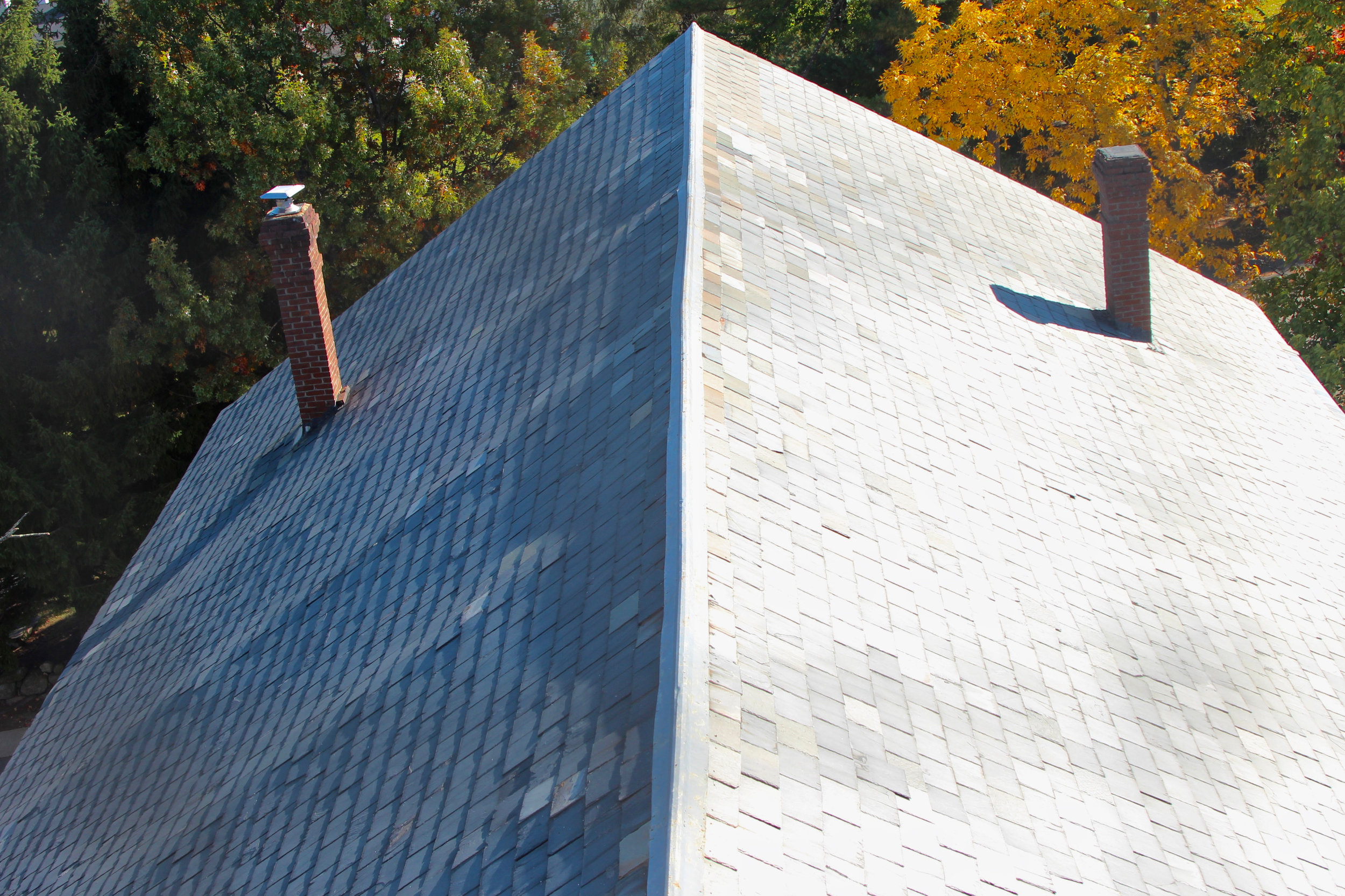
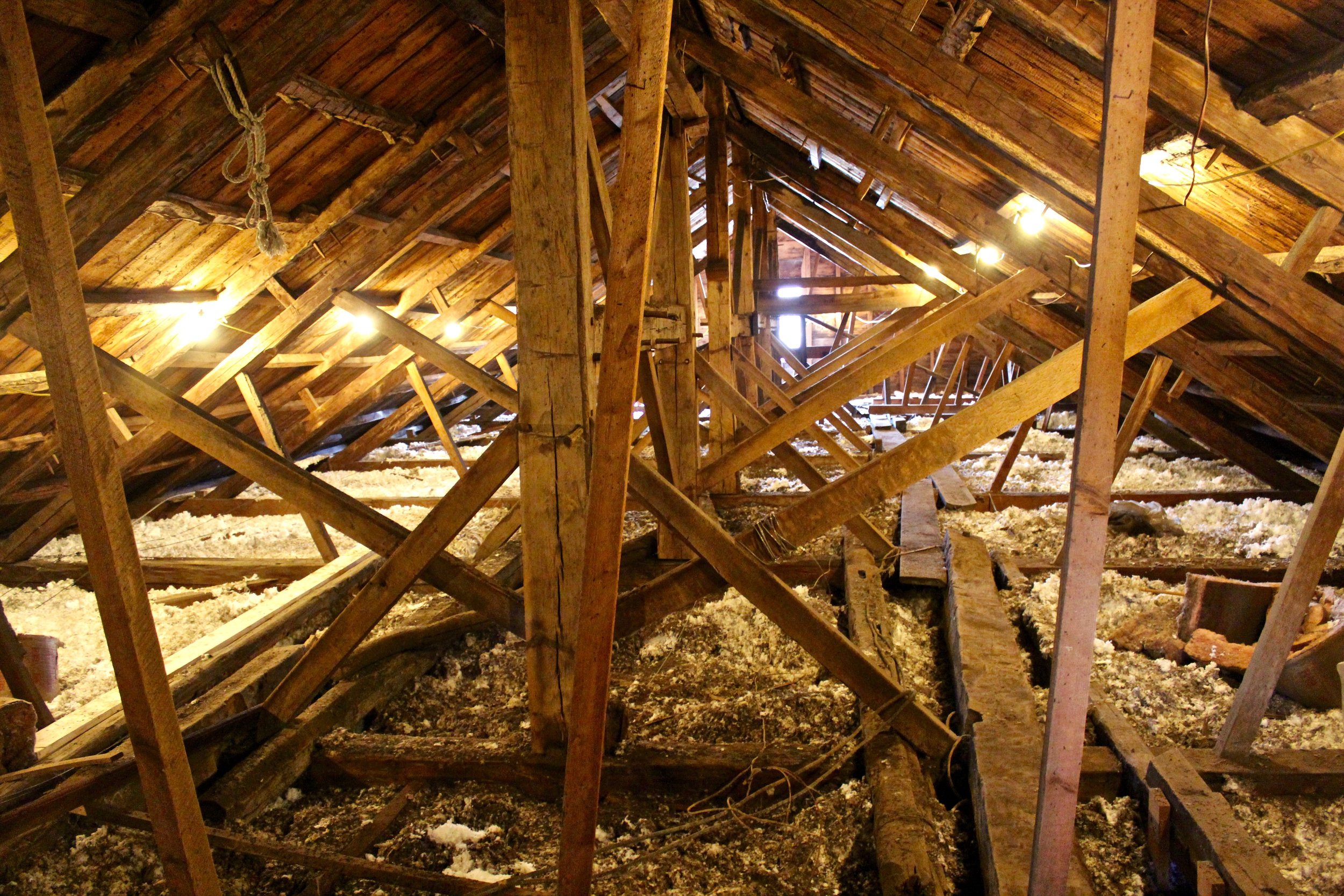
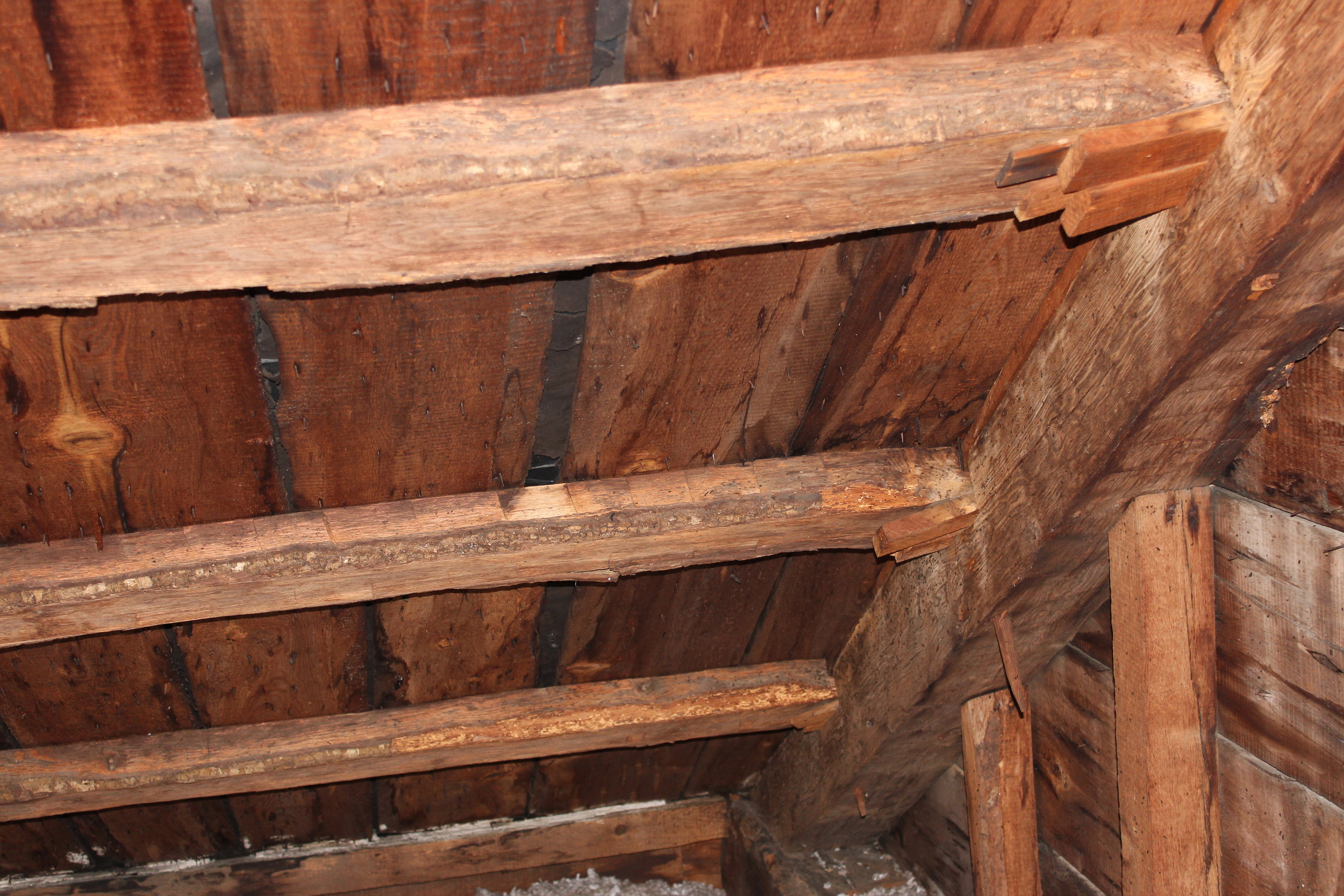

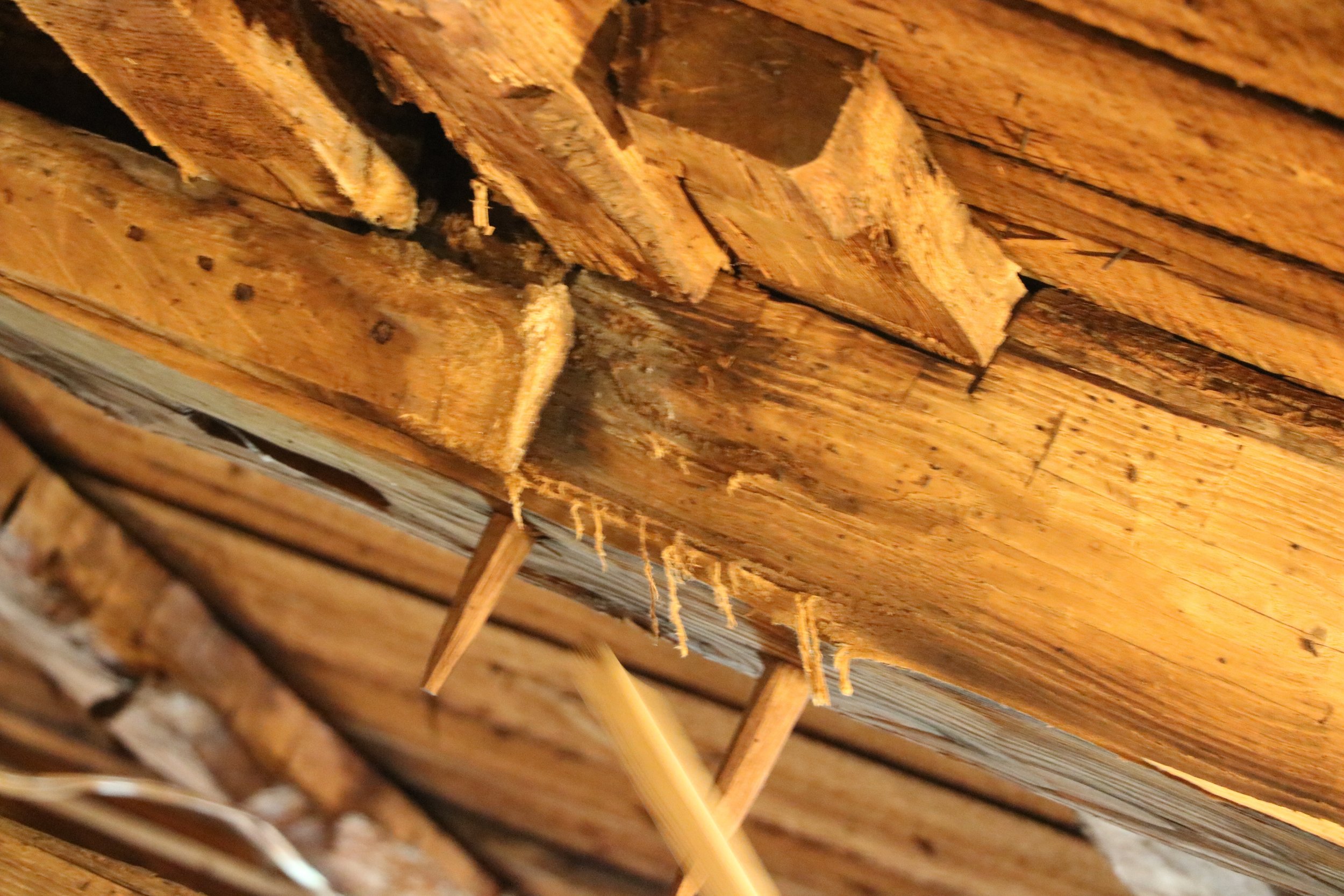
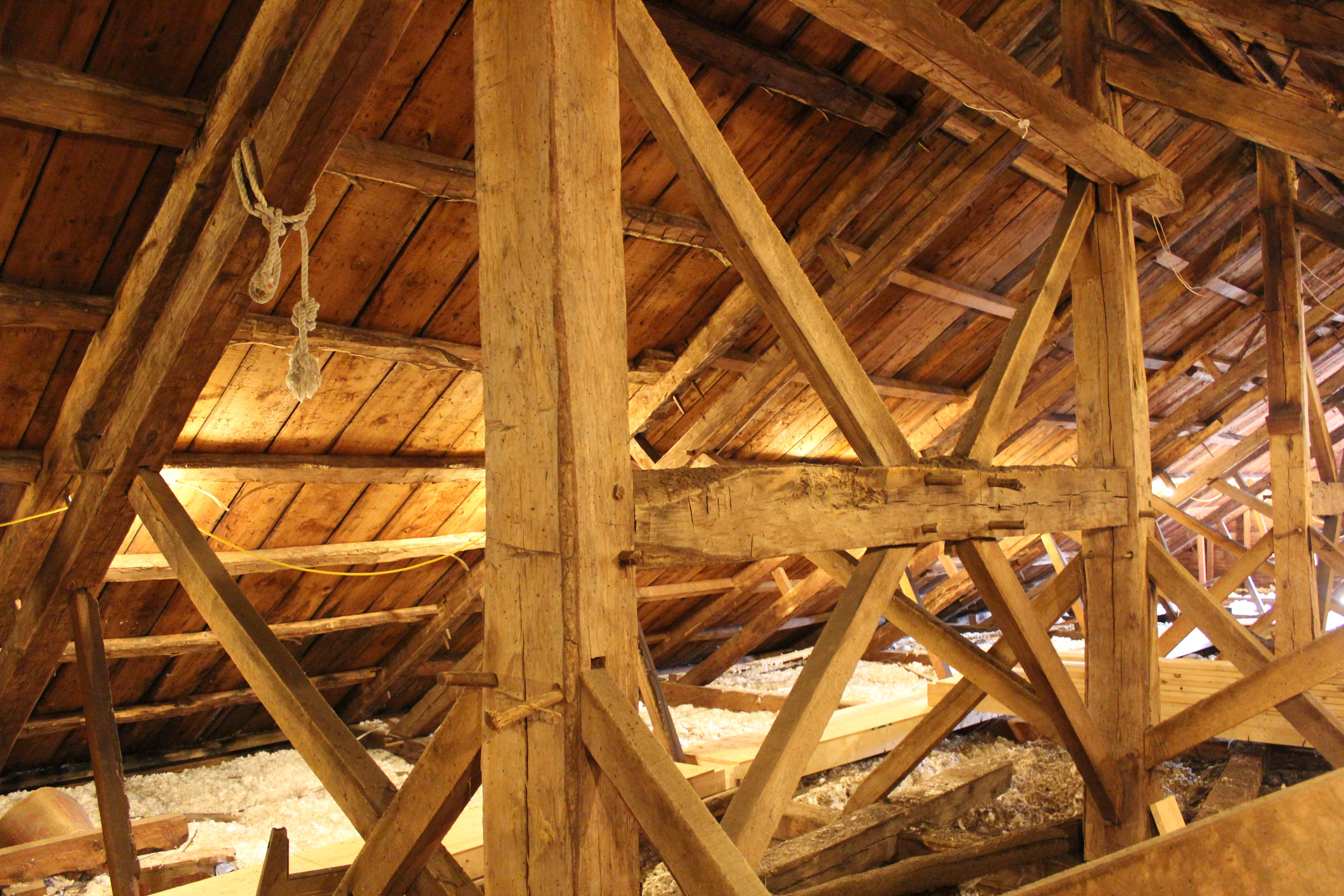
First Parish will execute the Roof System Rehab Project with expert partners Preservation Timber Framing. The work entails:
- Carefully removing the existing slates covering the roof.
- Repairing the board roof sheathing and underlying timber frame, and strengthening that frame to better handle the weight of the slates.
- Recovering the roof with the original slates plus replacement slates that match as necessary.
- Reinstalling or repairing the flashing, coping, and other roof details to ensure the roof is tight and waterproof.
First Parish is not just repairing the roof but rather executing a type of historic building preservation classified as rehabilitation by the Secretary of the Interior's Guidelines for the Treatment of Historic Properties. All work must be code-compliant yet historically-sensitive, and satisfy the applicable standards. For example:
- The existing original slate tiles will be reused as much as possible and carefully matched when not, so that the rehabilitated roof's slate exterior should look very much as it originally did (conforms to Standard #2).
- The original historic fabric of the roof structure will be absolutely preserved and retained, while the more modern additions of engineered lumber and metal connectors essential for code compliance will be easily distinguishable from the historic work, and straightforwardly reversible (Standards #2, 3, and 4).
- External trim and details along the roofline will be repaired if possible, or if necessary replaced in-kind with materials and methods similar to those used by the original builders (Standard #6).
The project is planned for the summer of 2017. The LCHIP award, however, is a matching grant, and so First Parish must raise the additional funds required for the project, $118,000.
This is the second LCHIP grant award First Parish has won for Meetinghouse rehabilitation. The first was $125,000 awarded in 2015 for the Meetinghouse Tower Rehabilitation Project.
About LCHIP and the 2016 Awards
The Meetinghouse Roof System Rehab project is one of thirty five awarded funding in LCHIP’s fifteenth grant round. supporting projects ranging from Northumberland in the North County to Nashua in the south and from Portsmouth in the east to Claremont in the west. The three and a half million dollars awarded by LCHIP are being matched by nearly $20,000,000 in funds from other sources.
Grant decisions are made by the 18-member LCHIP Board of Directors, following a rigorous months-long application and review process. “The LCHIP Board of Directors is always pleased to help with saving New Hampshire’s historic landmarks and landscapes” observed LCHIP Board Chairman Doug Cole or DS Cole Growers in Loudon. He continued: “It is great to see historic buildings rehabilitated to their original glory and contributing to the local economy again. Plus, since we all like to eat, protecting farmland is a good investment.”
The New Hampshire Land and Community Heritage Investment Program is an independent state authority that provides matching grants to New Hampshire communities and non-profits to protect and preserve the state’s most important natural, cultural and historic resources. Its legislatively mandated mission is to ensure the perpetual contribution of these resources to the economy, environment, and the quality of life in New Hampshire.
Since its inception in 2000, the program has provided 372 grants which have helped to protect nearly 200 historic structures and sites and to conserve more than 278,000 acres of land for food production, water quality, ecological values, timber management and recreation including hunting and fishing. Grants have been awarded in all parts of the state and in 149 of New Hampshire’s communities. Thirty-nine million dollars of state money have leveraged more than $244 million in funds from other sources. LCHIP grants are supported by fees on four documents recorded at the Registry of Deeds in every county of the state.
For more information about LCHIP, visit lchip.org or call (603)224-4113.

